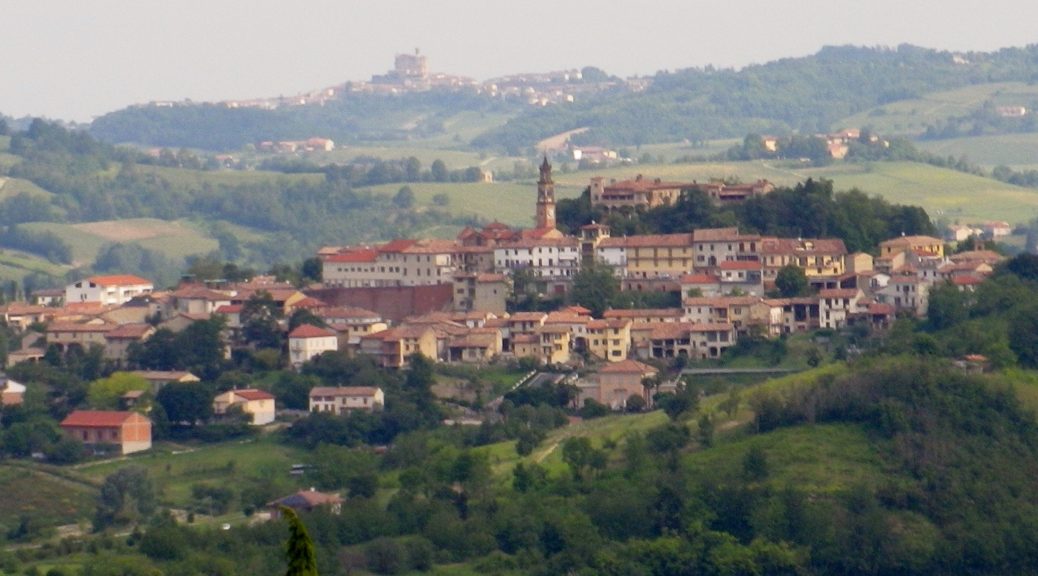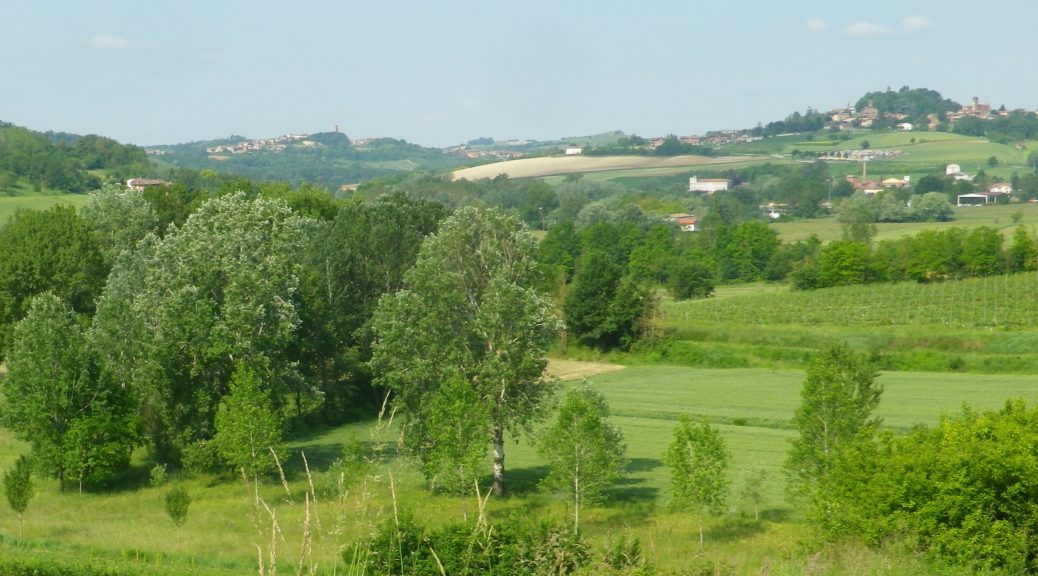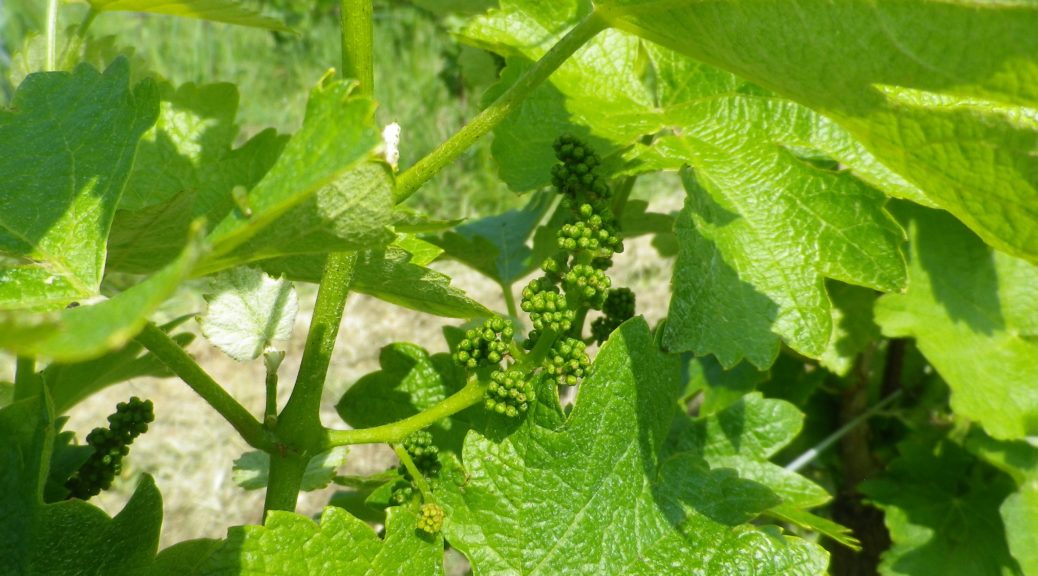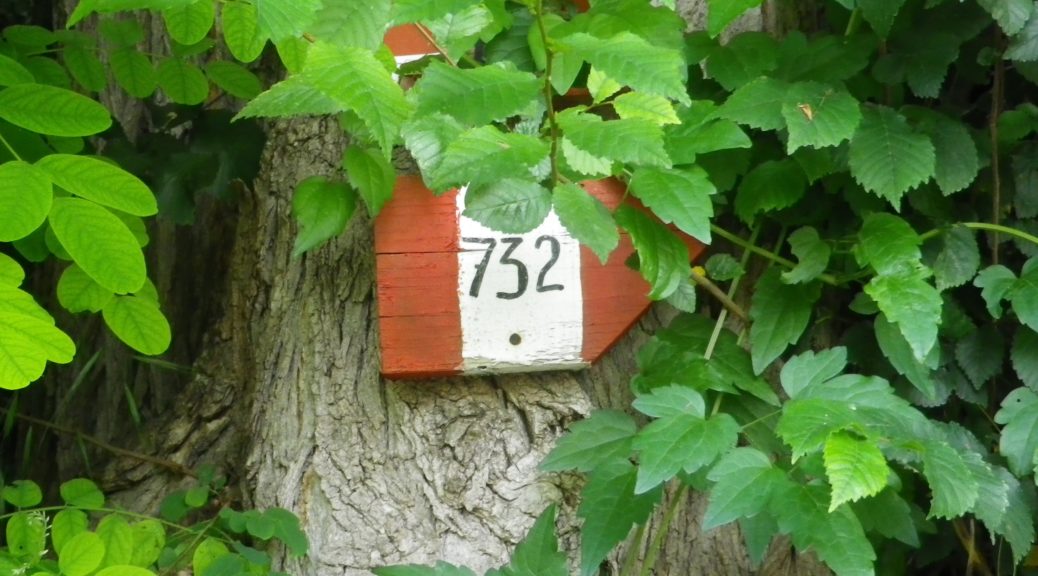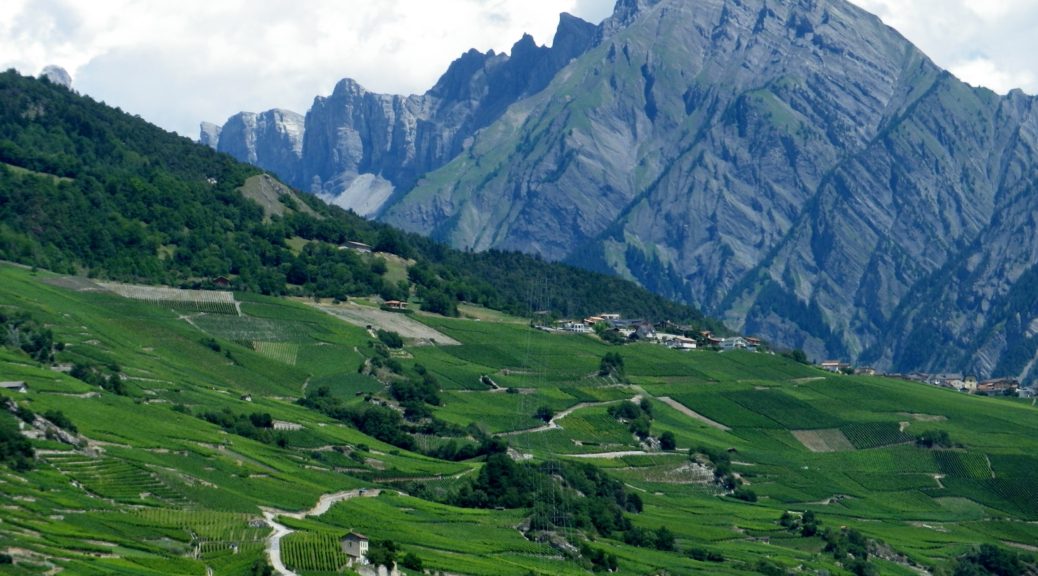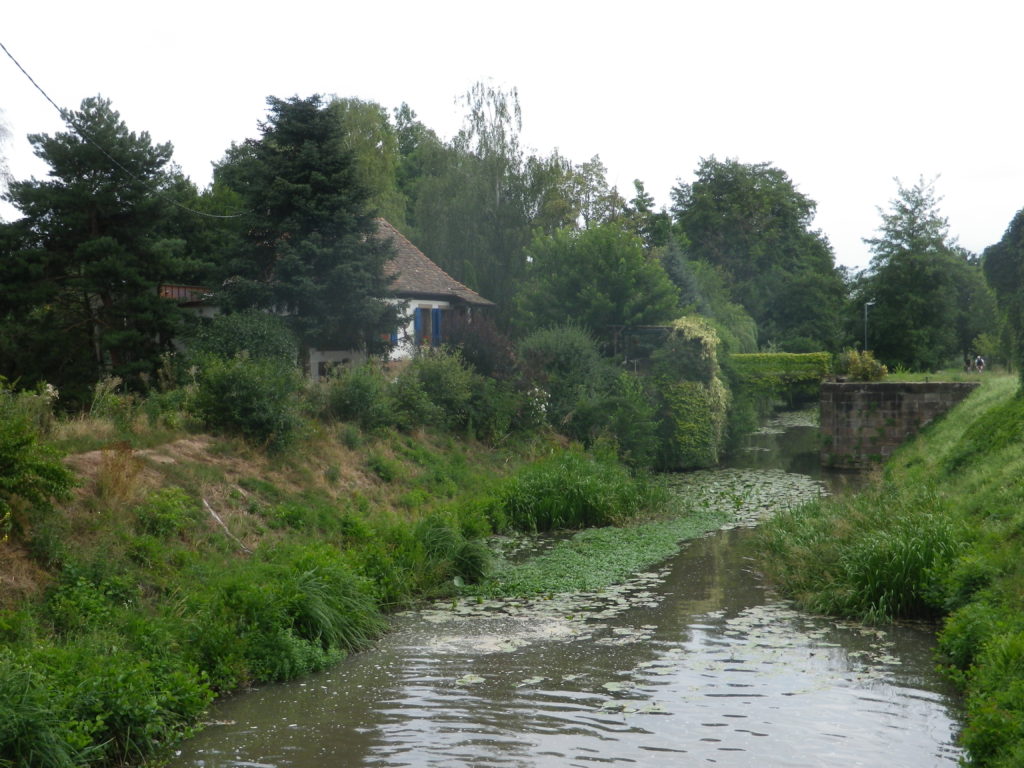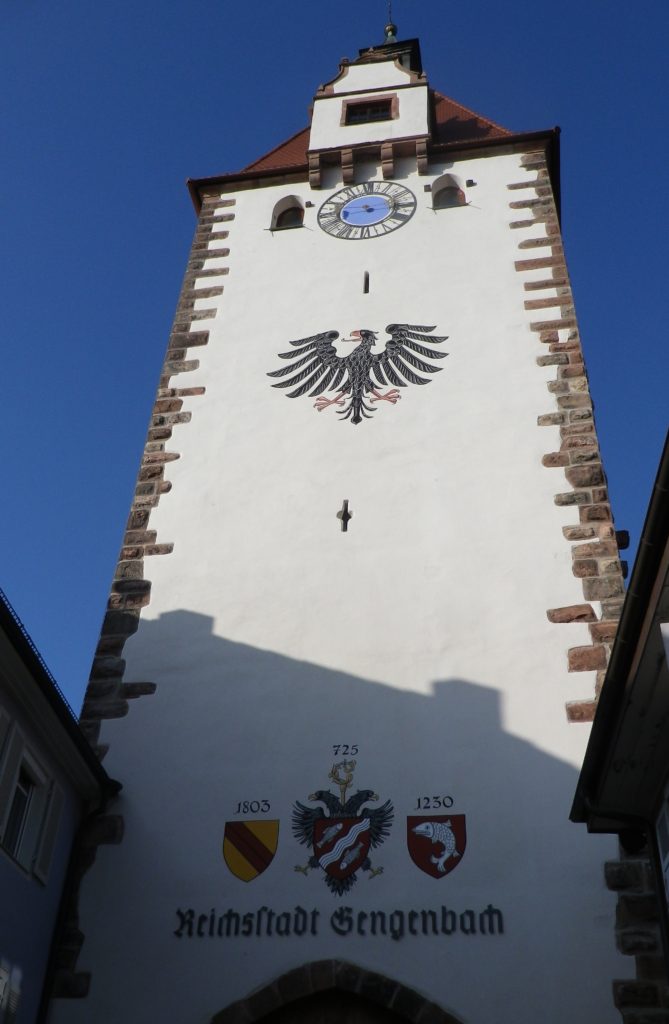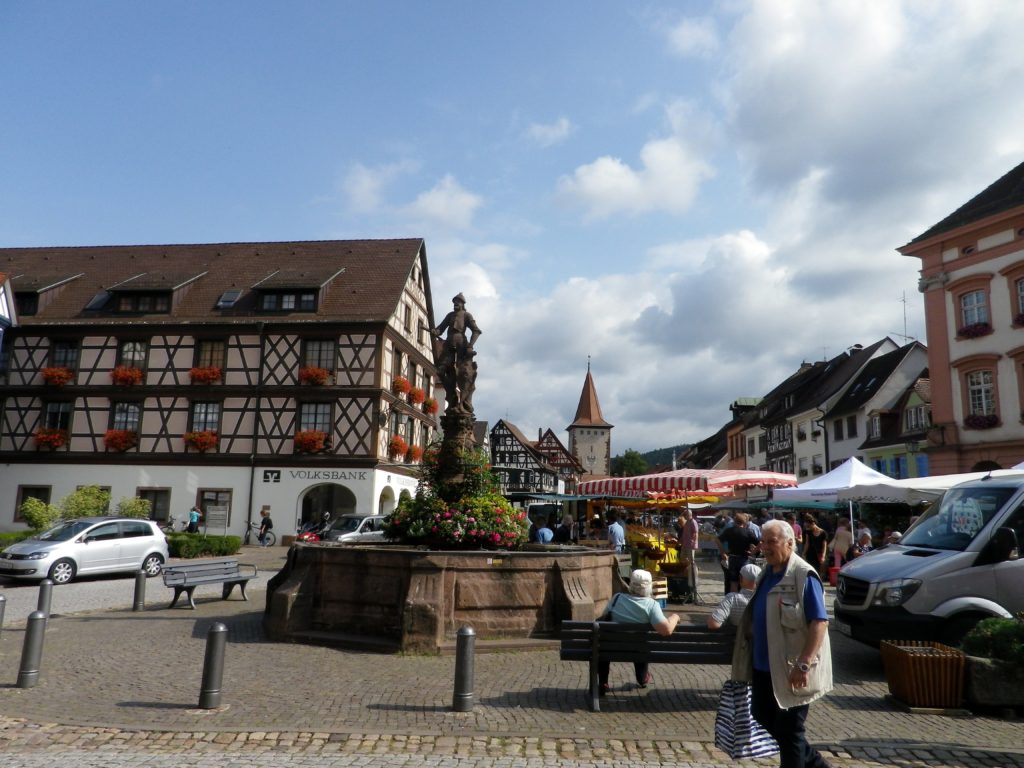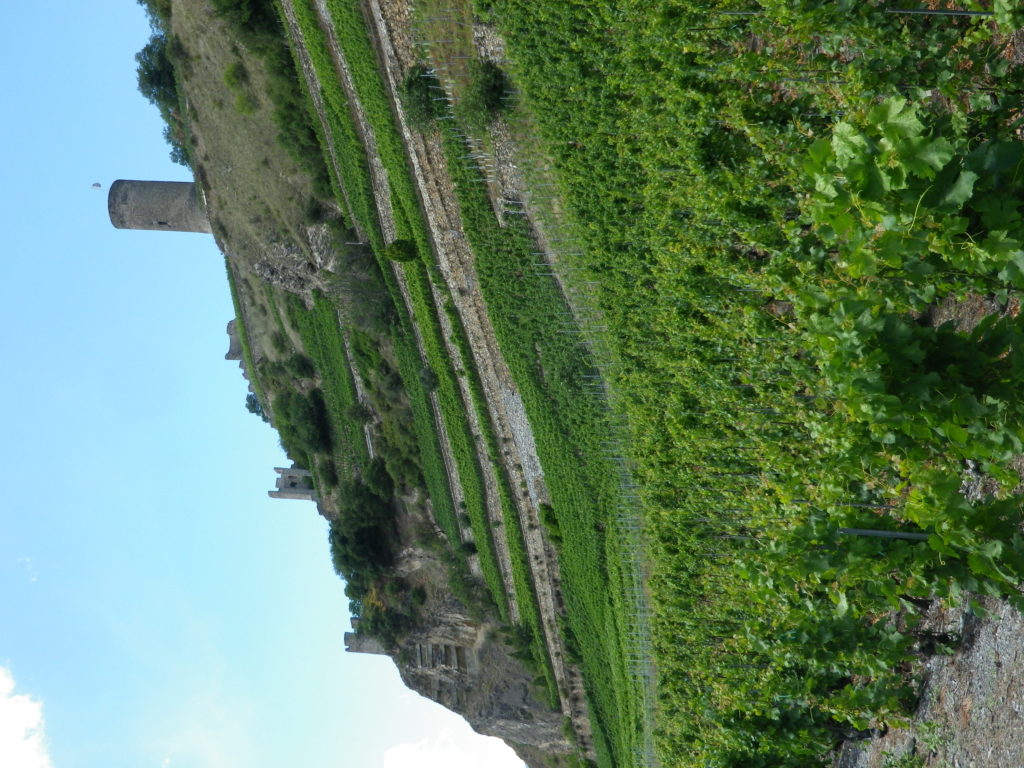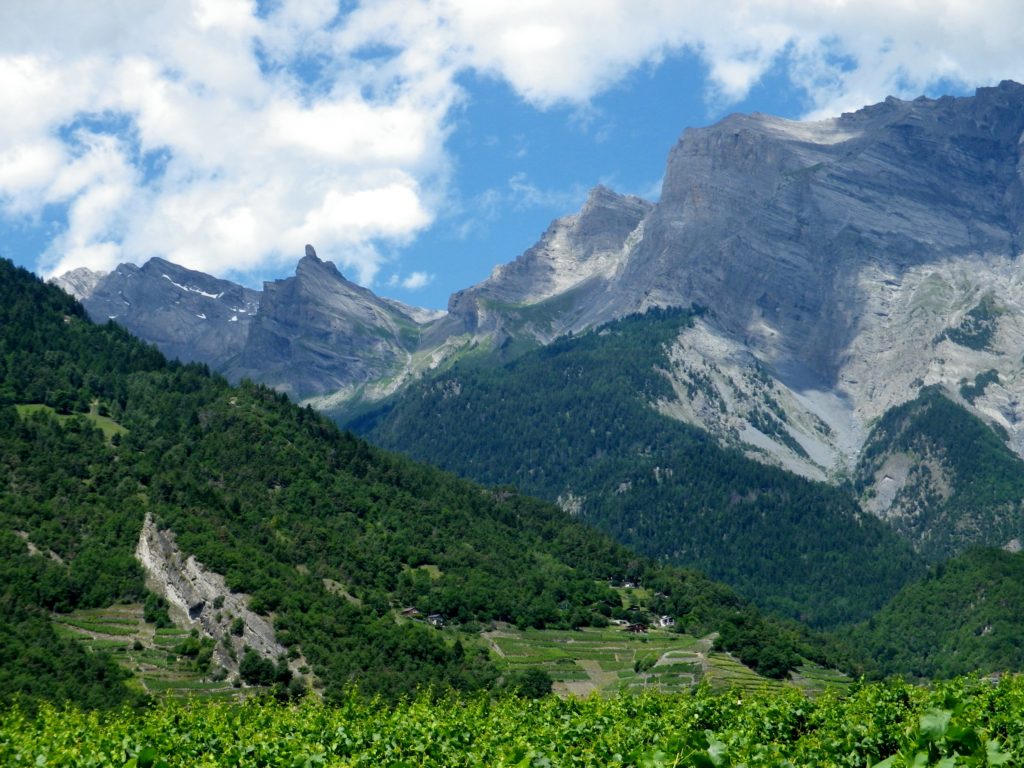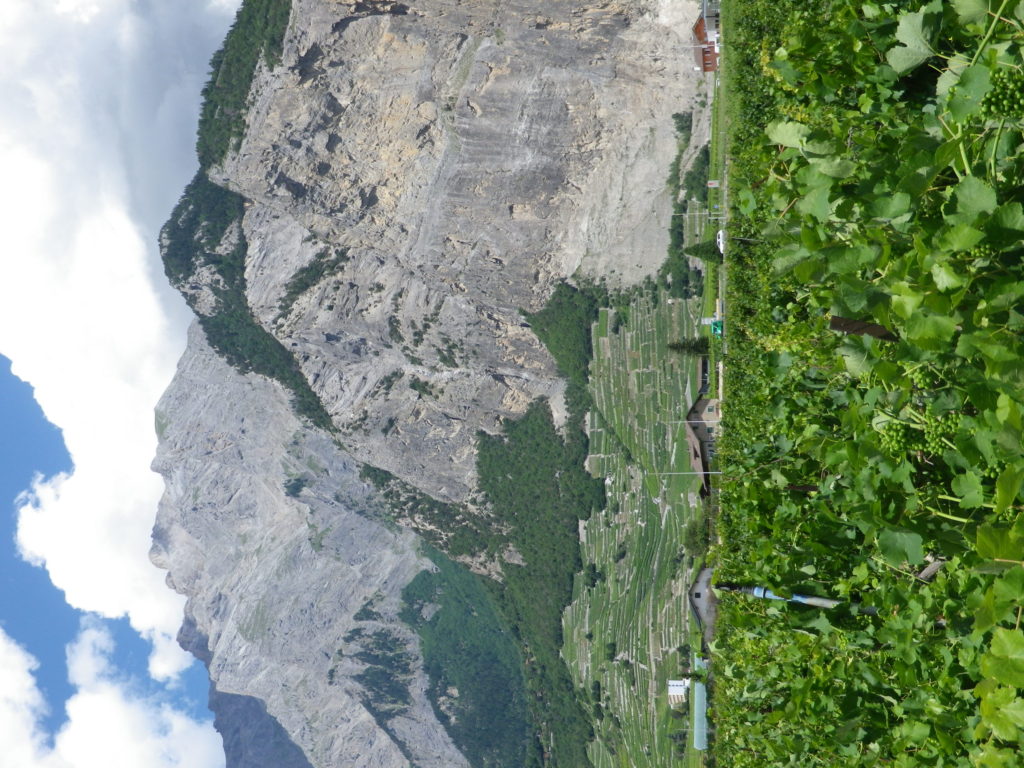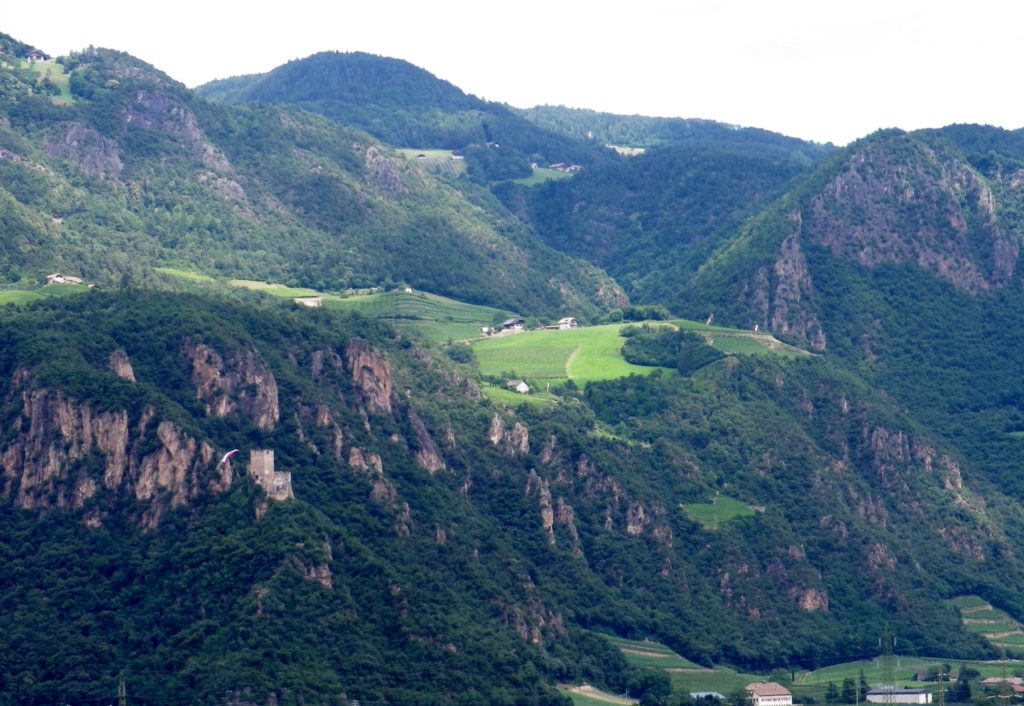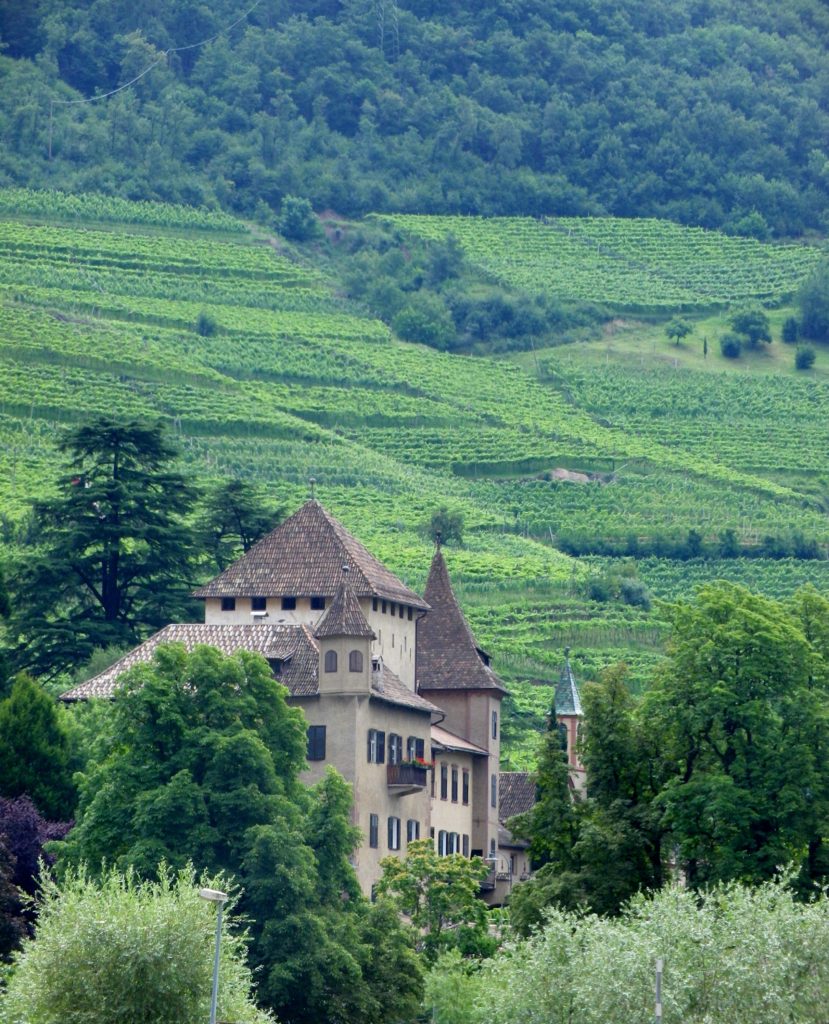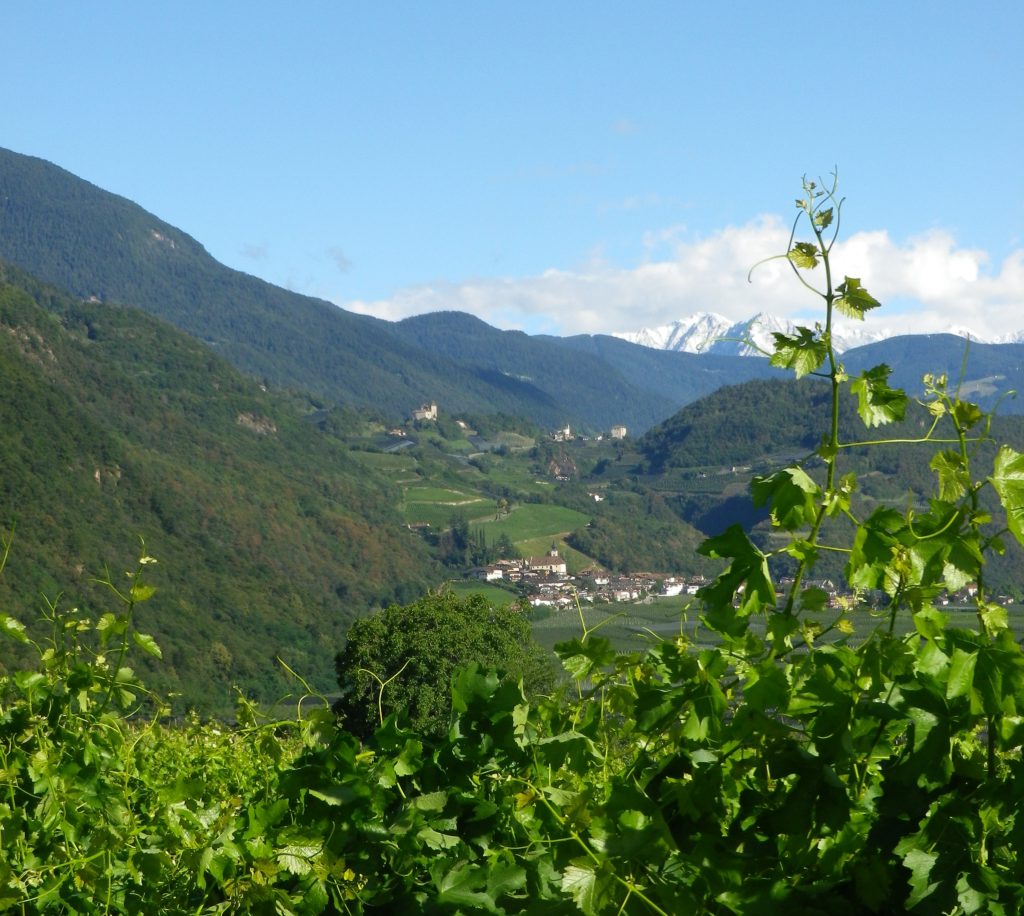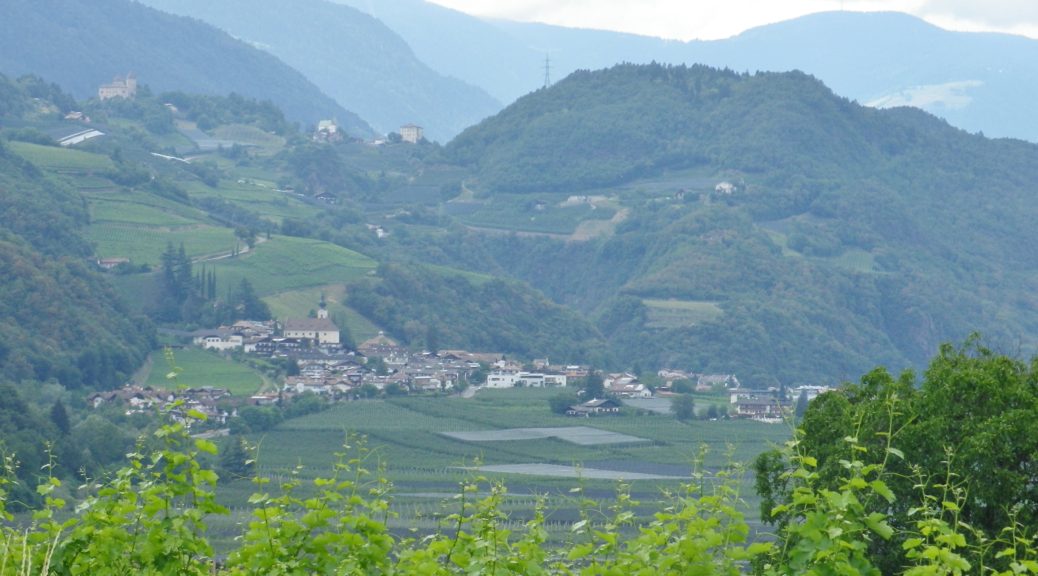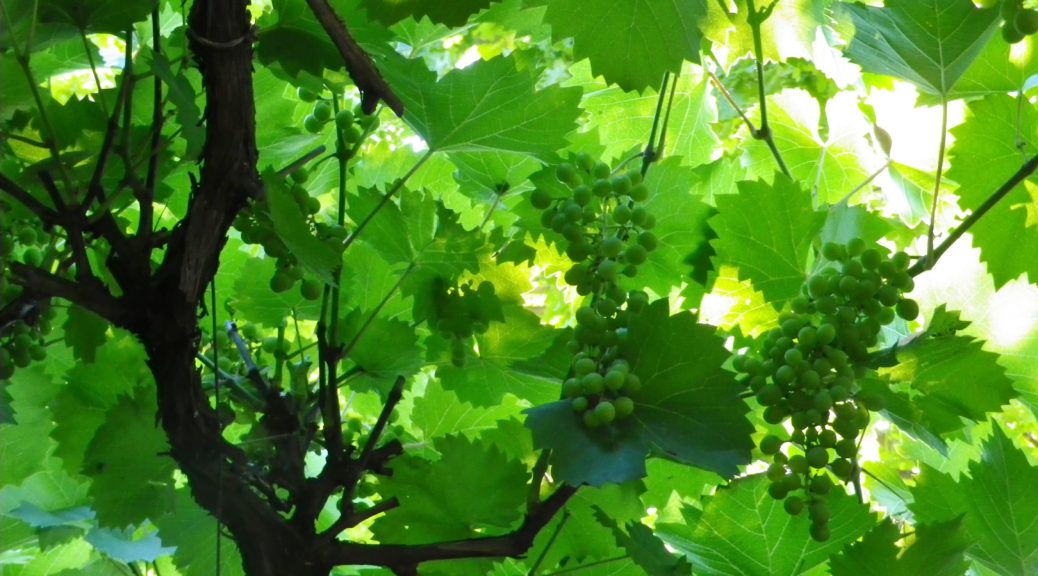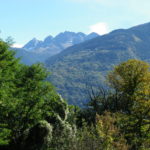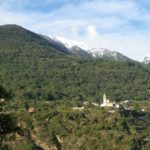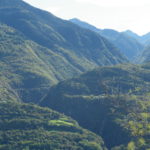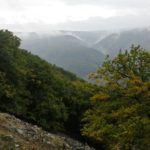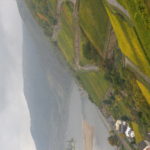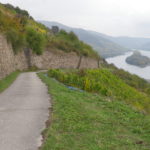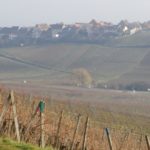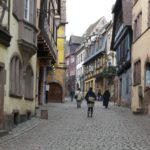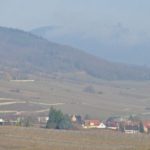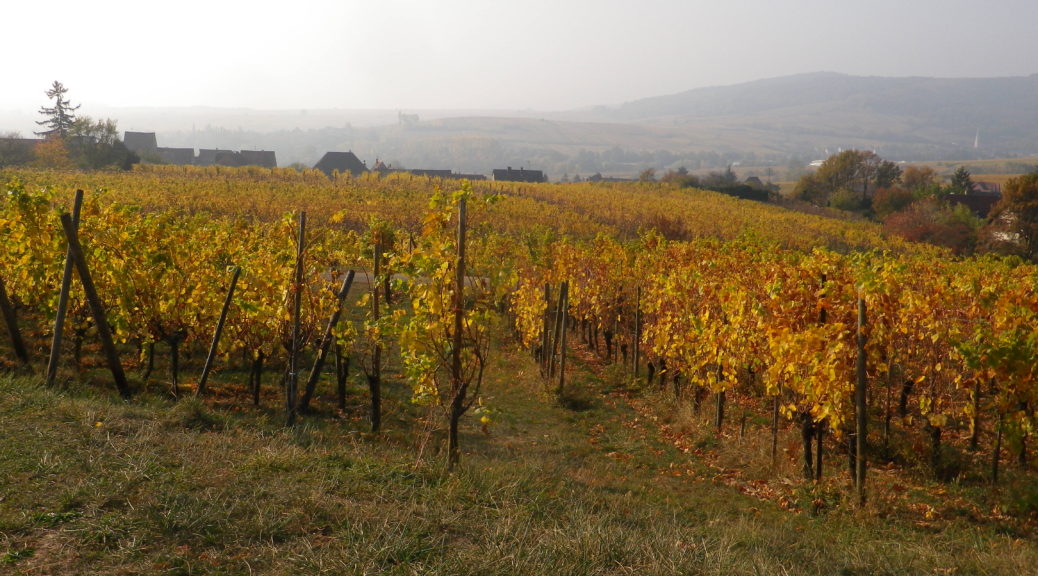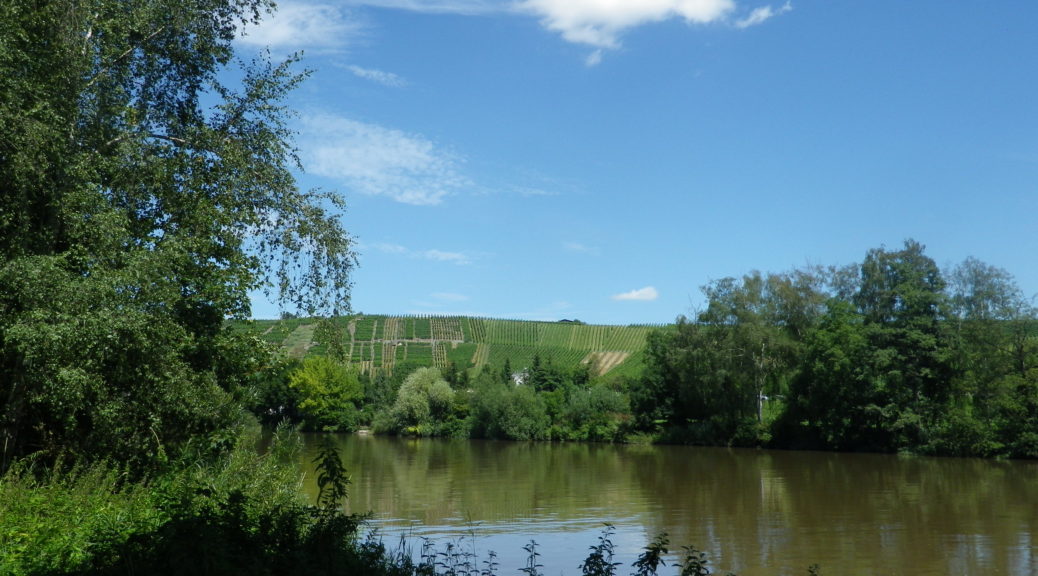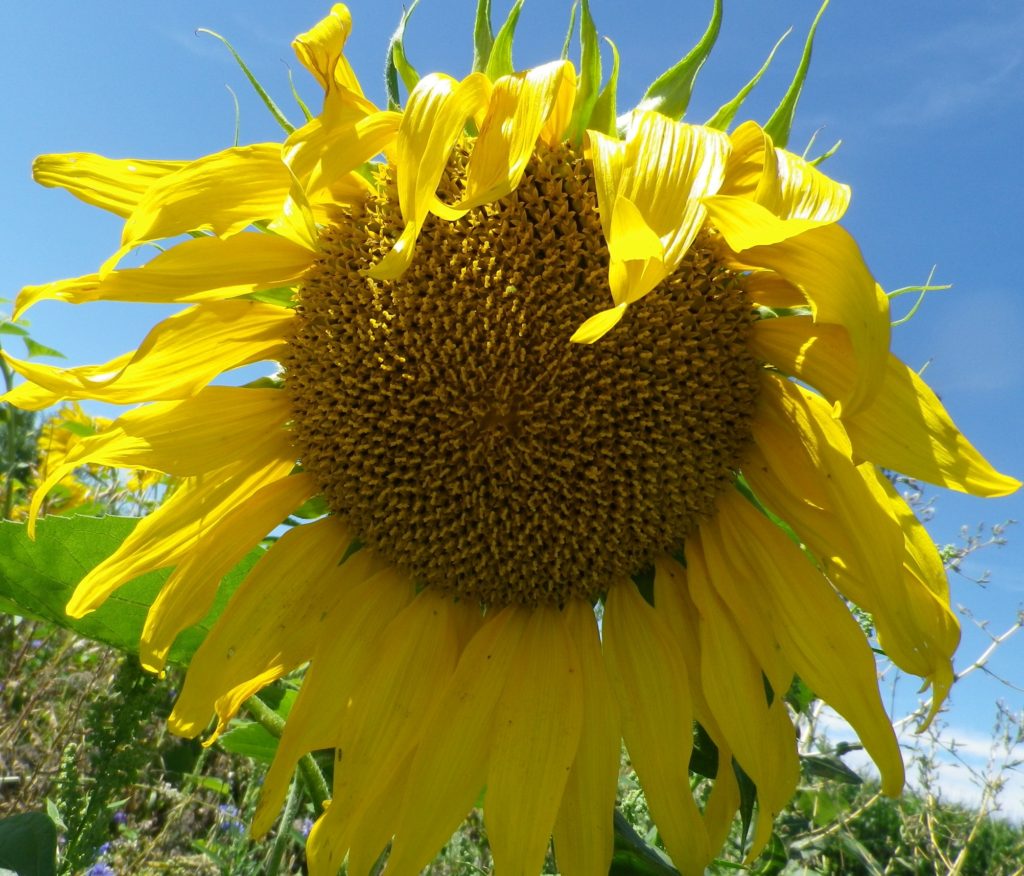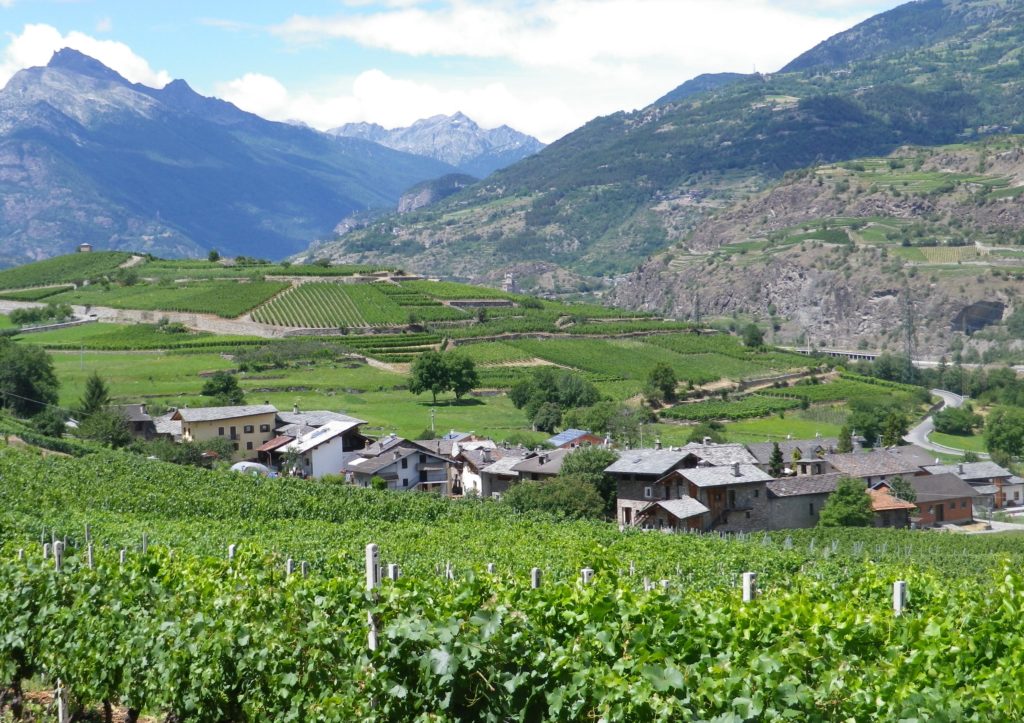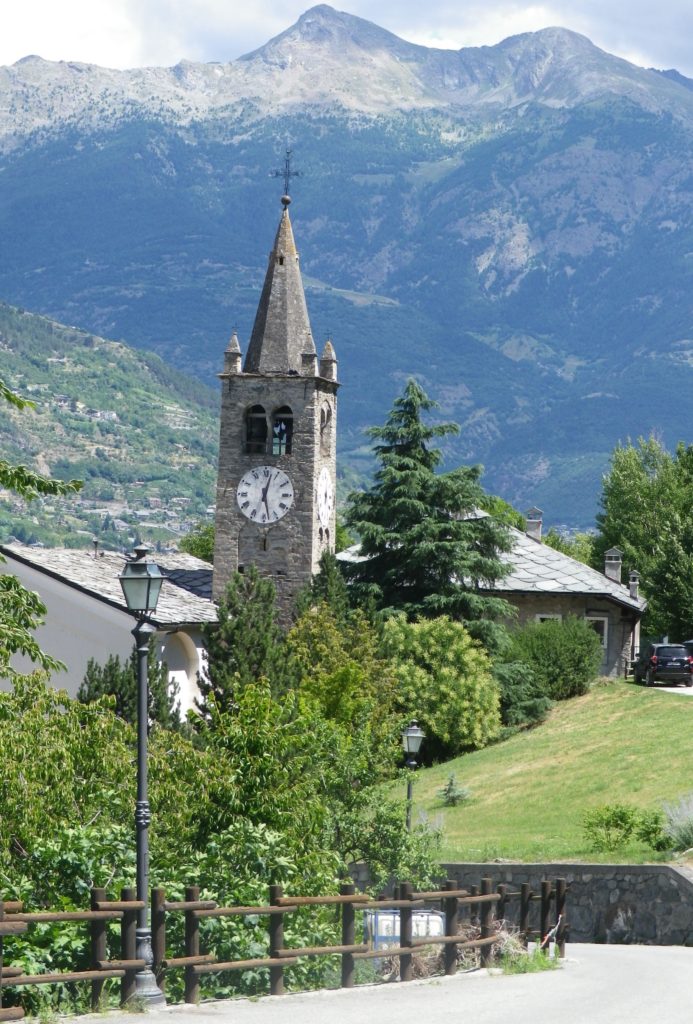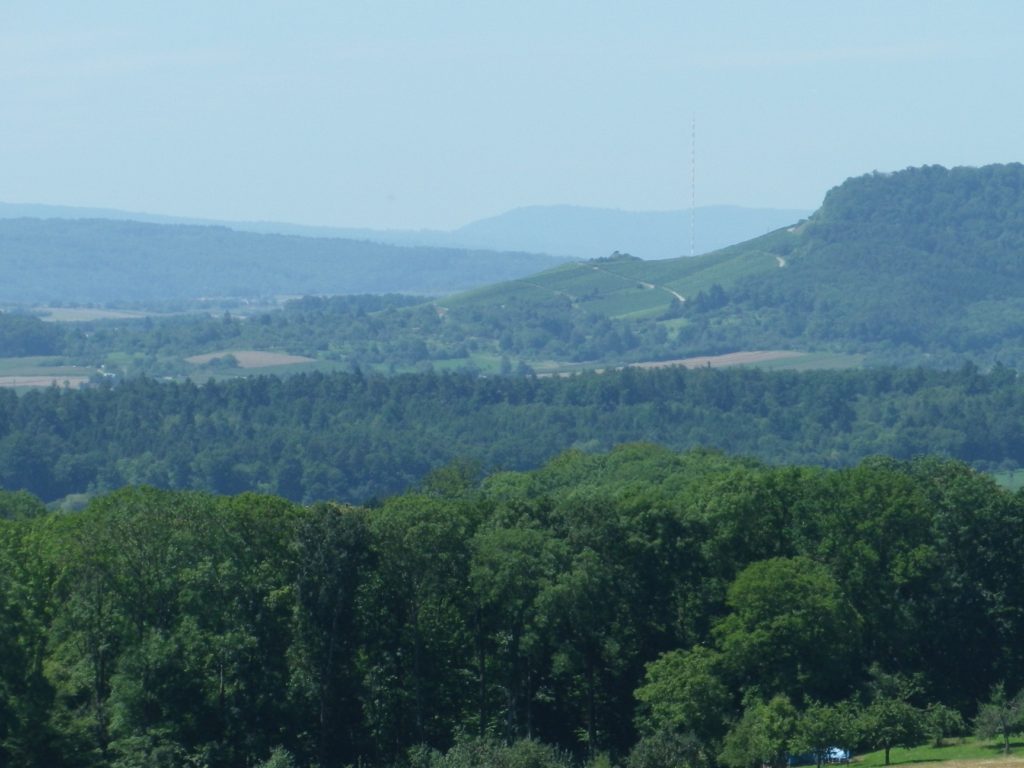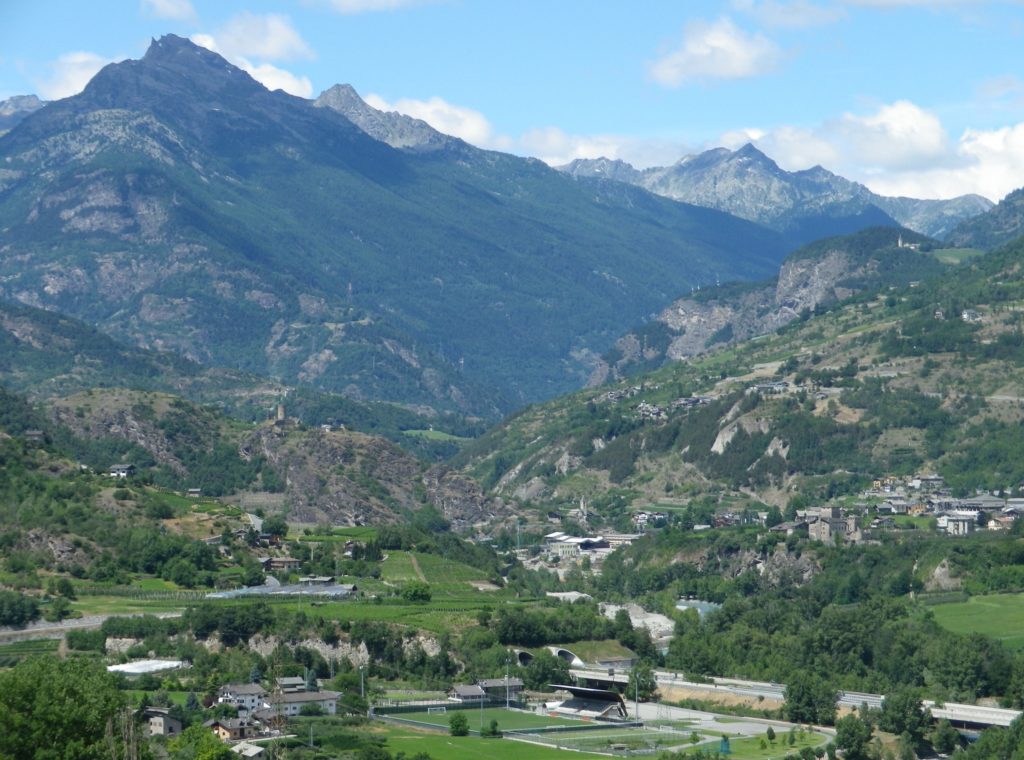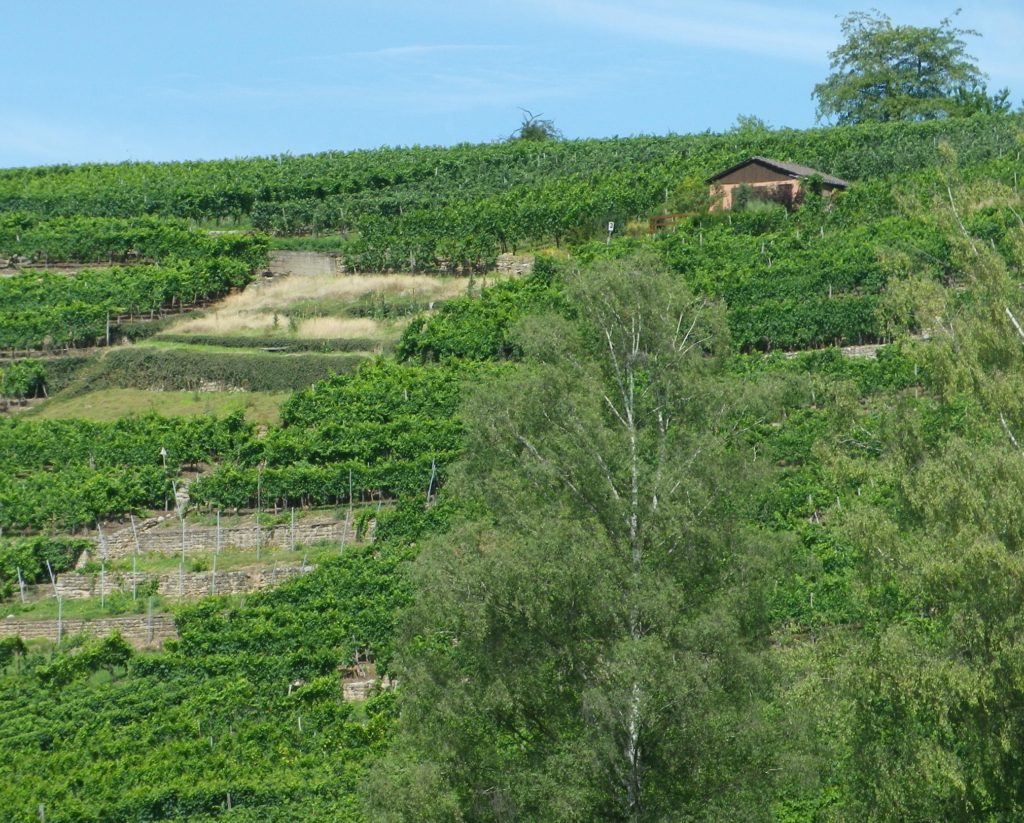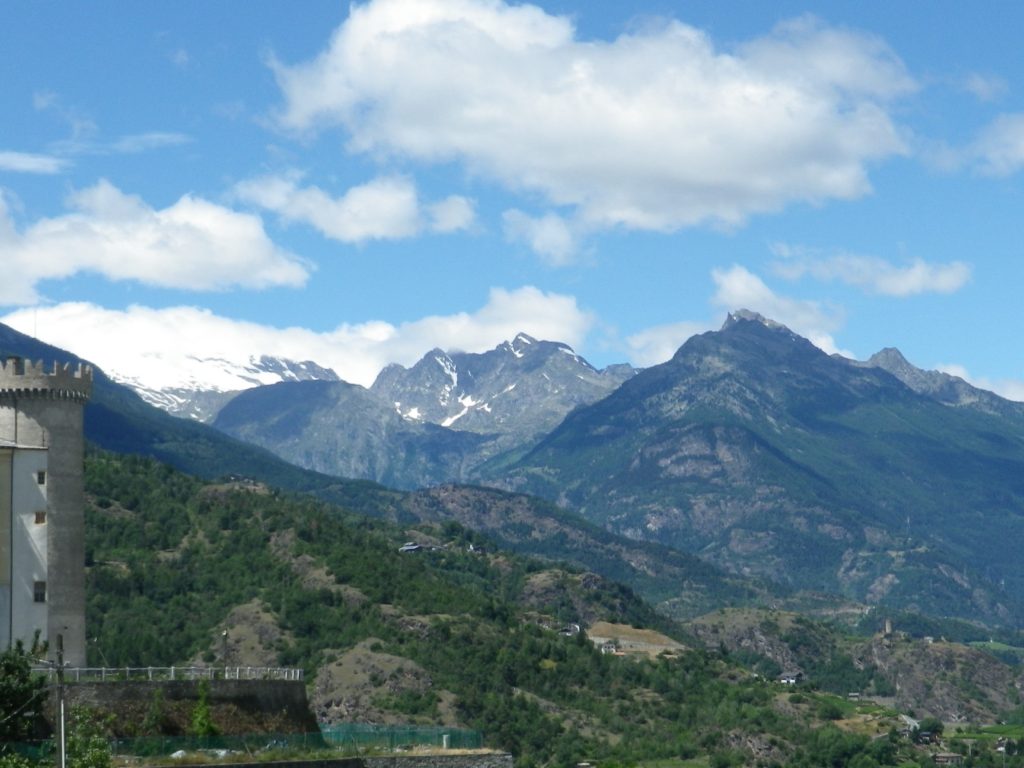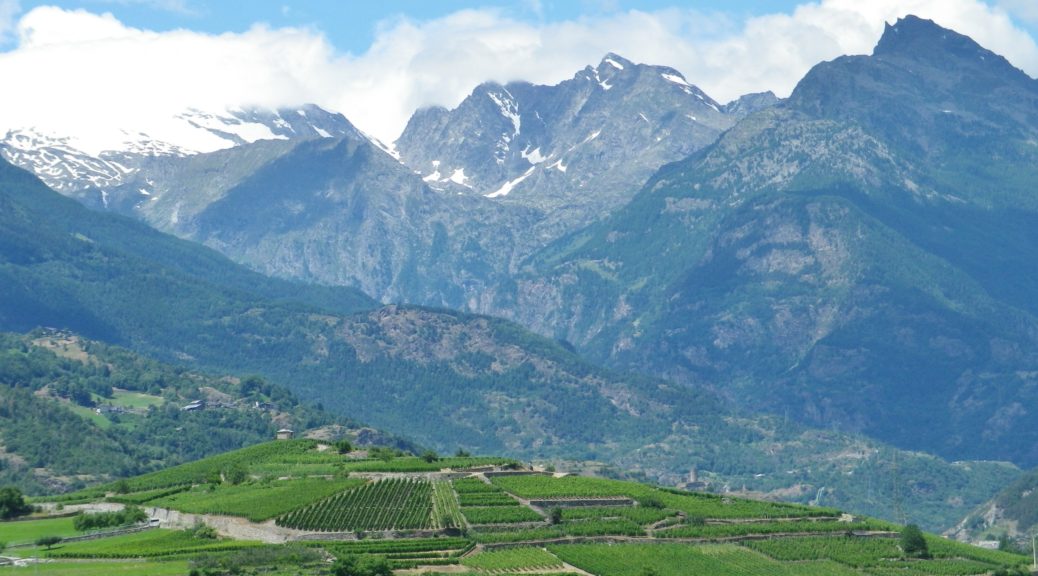Tag Archives: Italy
Vineyard Views from Vignale
I immediately resolved to visit the village of Vignale Monferrato, and wander its vineyards, on my premier trip to the Monferrato district in northern Italy. I first saw the vineyards and the village while hiking in 2016 through the Malvasia vines of nearby Casorzo. Rounding a prominence, I spied distant vineyards circling a steep hill capped by a compact village. Capping the village itself is an impressive parish church, with the most expansive view imaginable of the Monferrato from its side-yard.
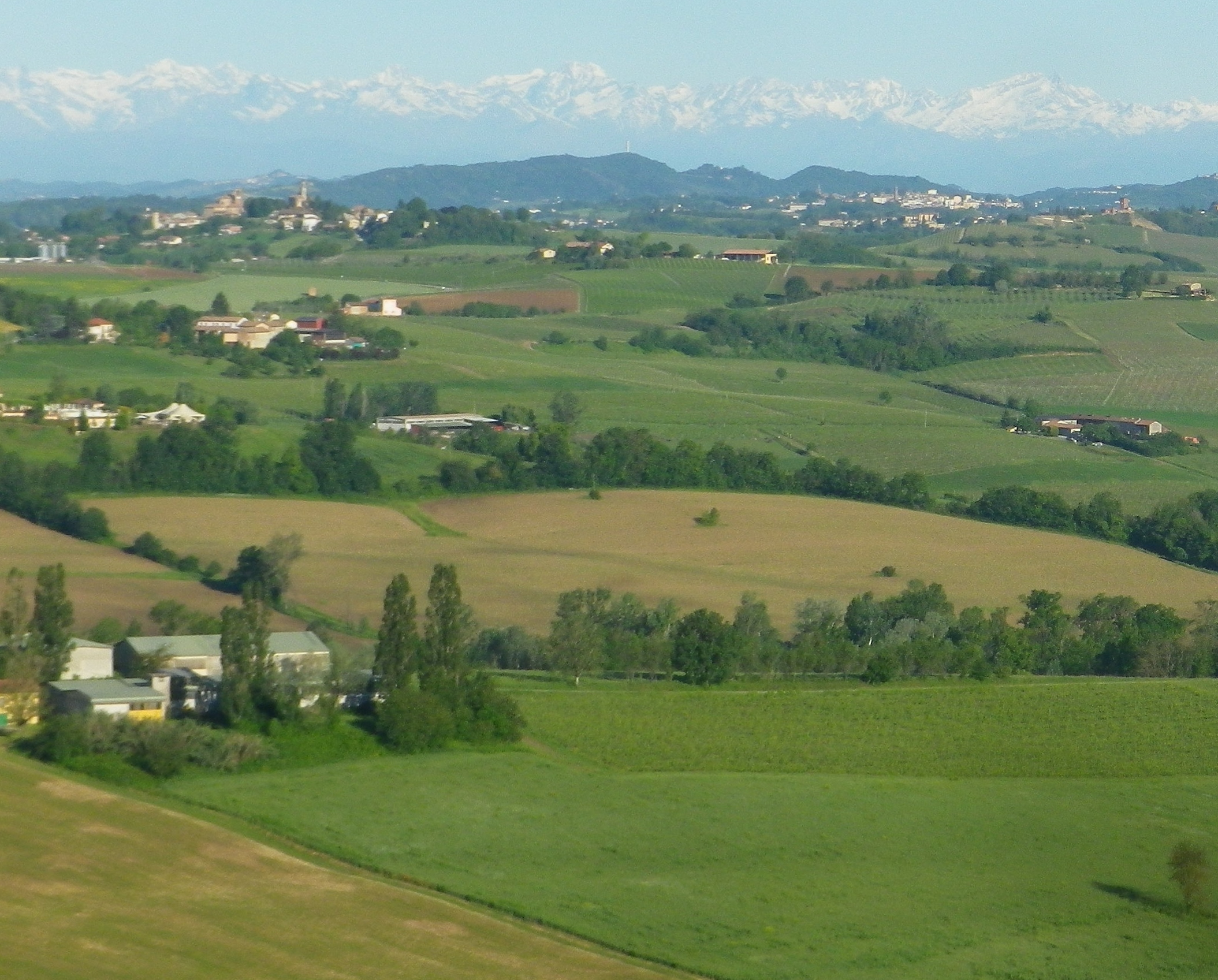
It took a while, but I finally got there in late May of 2019. (Little did I know then that I would not return to Italy for a little over two years now.) But the wait then was worth it, as the experience of the village and the hike was fantastic. The food and wine were outstanding of course, this being the Piedmont.
Wine Notes: Piedmont’s Monferrato
What I Learned
Monferrato has a long tradition of wine-making, pre-dating even the Romans. As the famous Roman naturalist, Pliny the Elder noted, the Romans greatly appreciated the wine coming from the Muscat grape cultivated in the Monferrato as a varietal more resistant to cold weather.
The rise of Christianity and establishment of monastic organizations ensured that even after the fall of the Roman Empire, and especially after the barbarian invasions, the production of wine would continue in the Monferrato up until today.
Tra Valli e Cascine: Trail in a Nutshell
Trail Name: Tra Valli e Cascine (AKA Sentiero 732)
Trail Type: short-distance hiking circuit; marking on the trail is fairly good, and consistent; once out of town, the trail surface is mostly gravel over hard packed earth, with a grassy stretch for about two kilometers/a bit over a mile.
Length:
Total – 9.7 kilometers/6 miles
Convenient to: Casale Monferrato, Alessandria, Piedmont, Italy
Marking:
Trail signage: Vertical red-white-red bars imprinted with the number 732 in black; alternatively, trail markers are red and white horizontal bars.
Trail Signage photos: See featured photo above, and trail marking photo below:
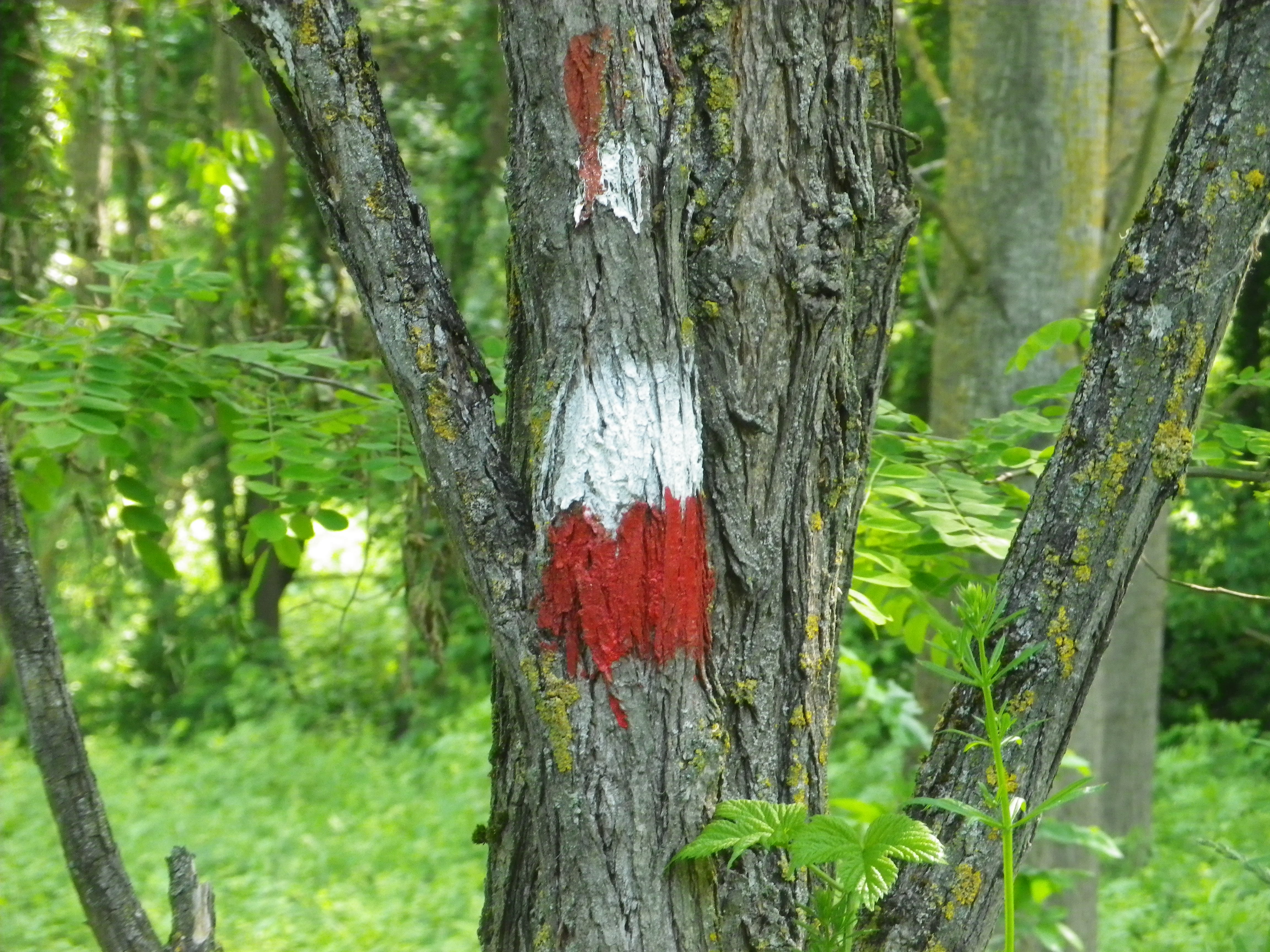
Gallery February 2021
Top Three Cycling Itineraries
Like last month, the pandemic has left me without many cycling options for 2021. Therefore, I would like to take the time this month to note some of my favorite cycling itineraries passing through vineyard areas in Europe, in the hopes that someday soon, we can all get out there again to enjoy outdoor and wine tasting adventures with friends!
- The Place: Germany (Baden) and France (Alsace)
No boundaries! See great wine producing districts on both sides of the Rhine.
The Activity: Cycling a 235-kilometer-long circuit, the Romanik und Wein/Style Roman et Vin
Why this one: This cycling itinerary offers great diversity: From Black Forest Mountains to the Vosges Mountains, through bucolic fields, woods, and vineyards of course, through hamlets, picturesque villages and the city of Strasbourg, passing from easy, to moderate, to more challenging cycling segments. Cyclists will discover quiet, charming, unspoiled locations in which to take a break, and enjoy the atmosphere. Then comes Strasbourg, with its almost overwhelming sights and opportunities for food, wine, cultural events and people-watching from numerous cafes. Finally, while there is some street riding (although very little of it through Strasbourg as this itinerary passes through the city’s extensive pedestrian zones), much of this itinerary is vehicle-free, using agricultural access lanes, bike paths and even canal tow paths, repurposed and maintained (!) for bicycles.
Caveats: I did not cycle the segment between Wasselonne and Hagenau because this area has no vineyards and it had the most street-riding along the whole itinerary. Therefore, I cannot address any issues there. Most cyclists would require at least three days to complete this circuit, cycling at least 78 kilometers/48 miles a day.
Winning Wine Discovery: Two very different wine cultures and both are delicious!
From East to West:
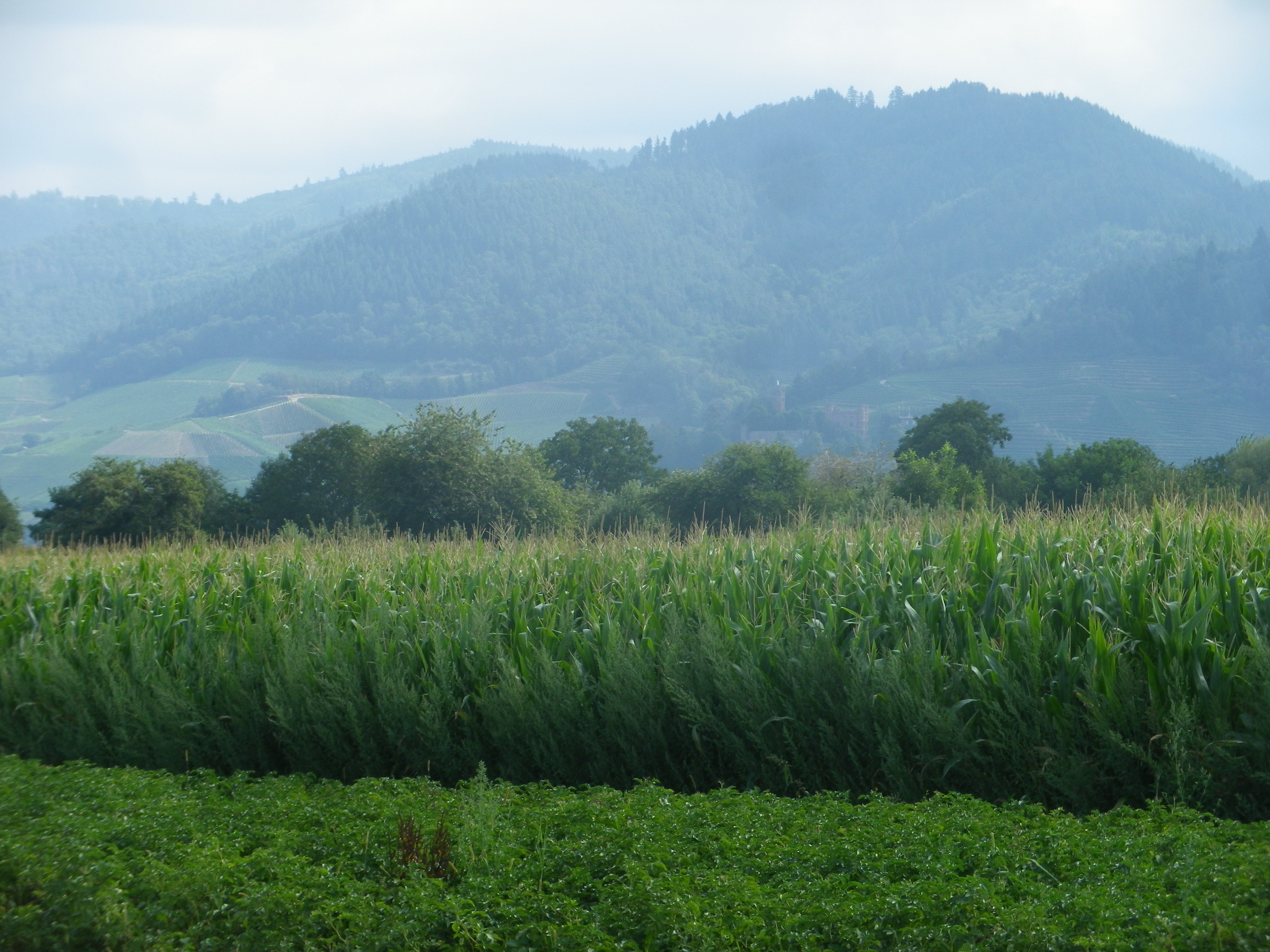
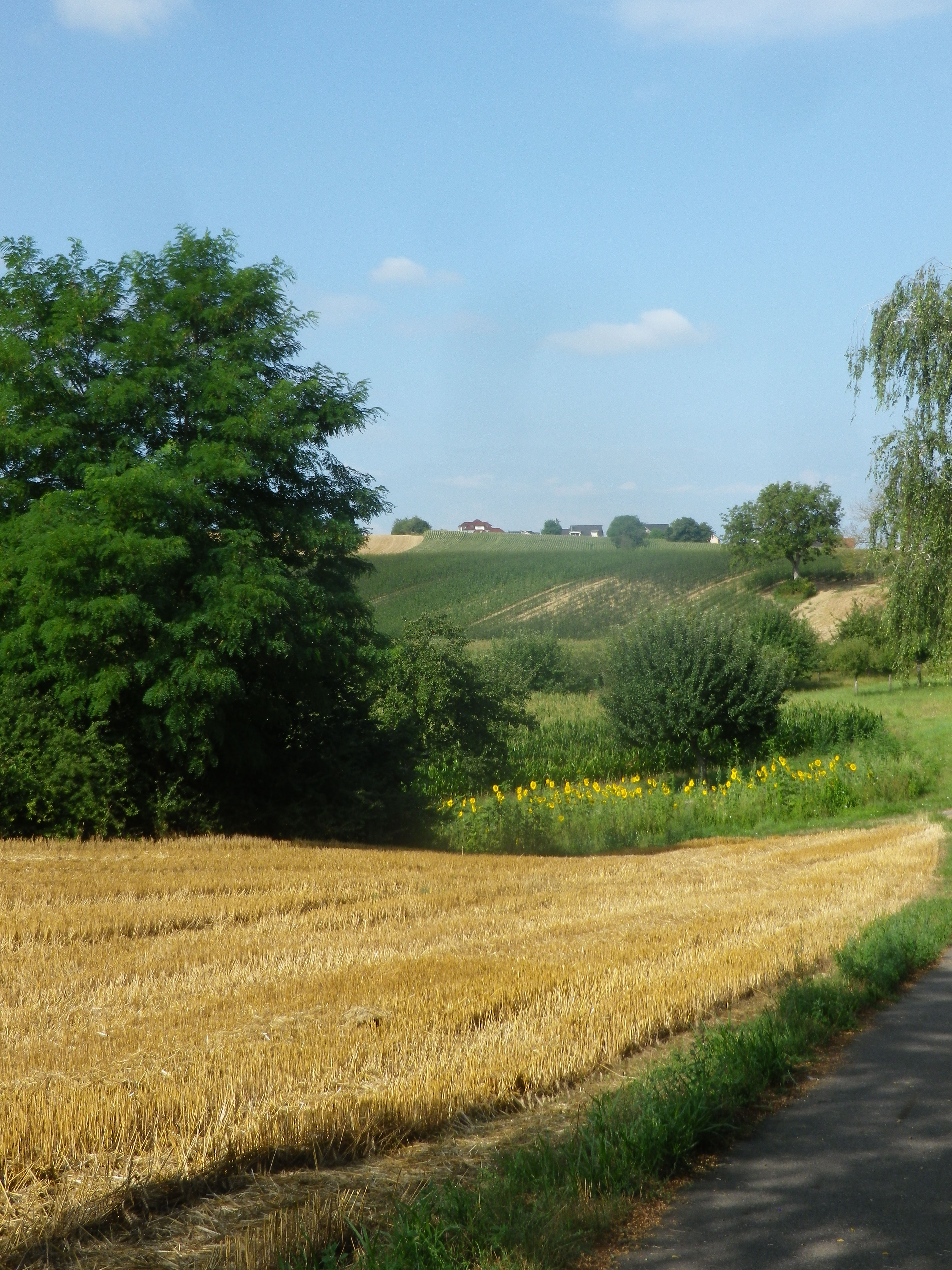
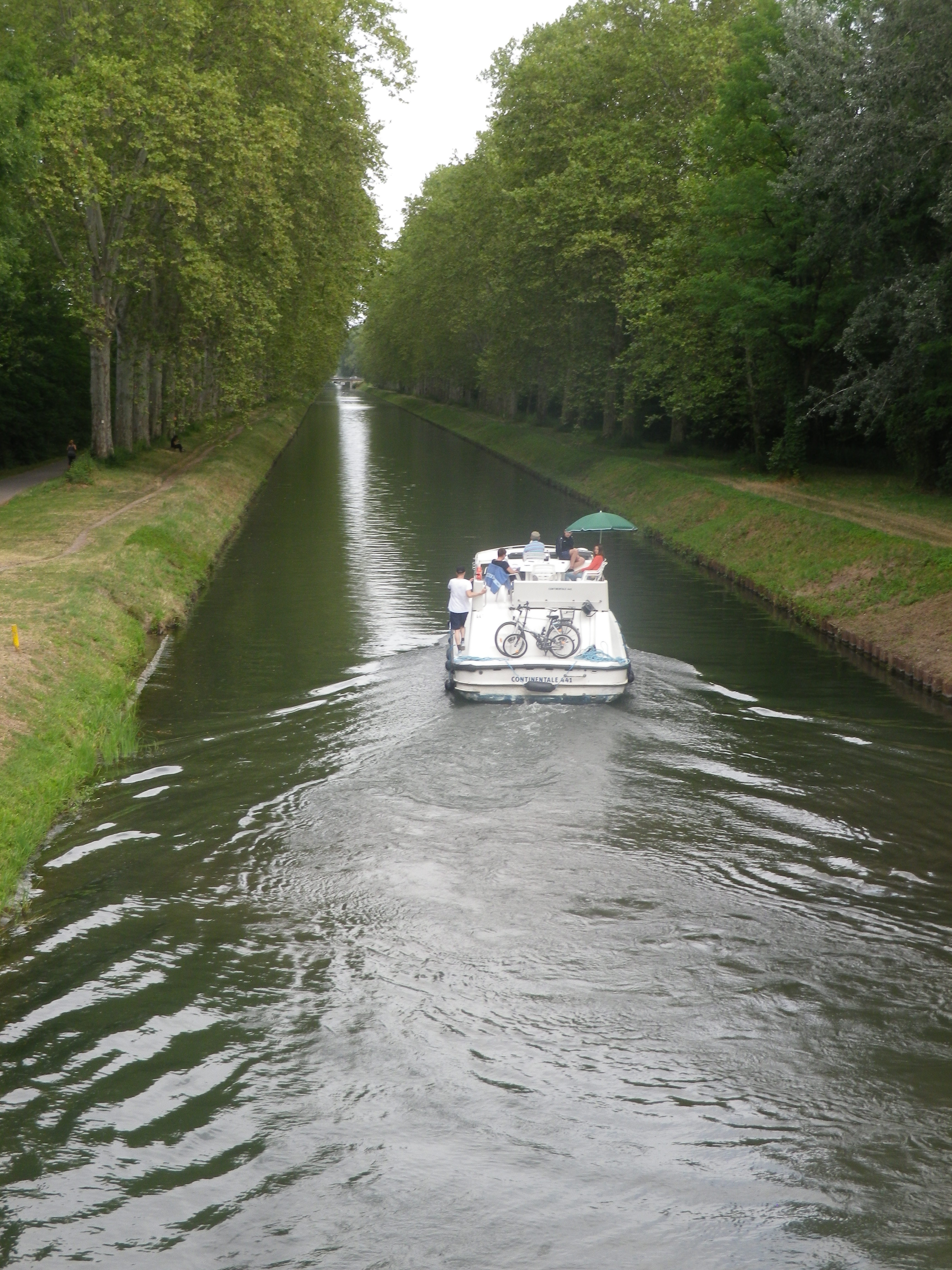
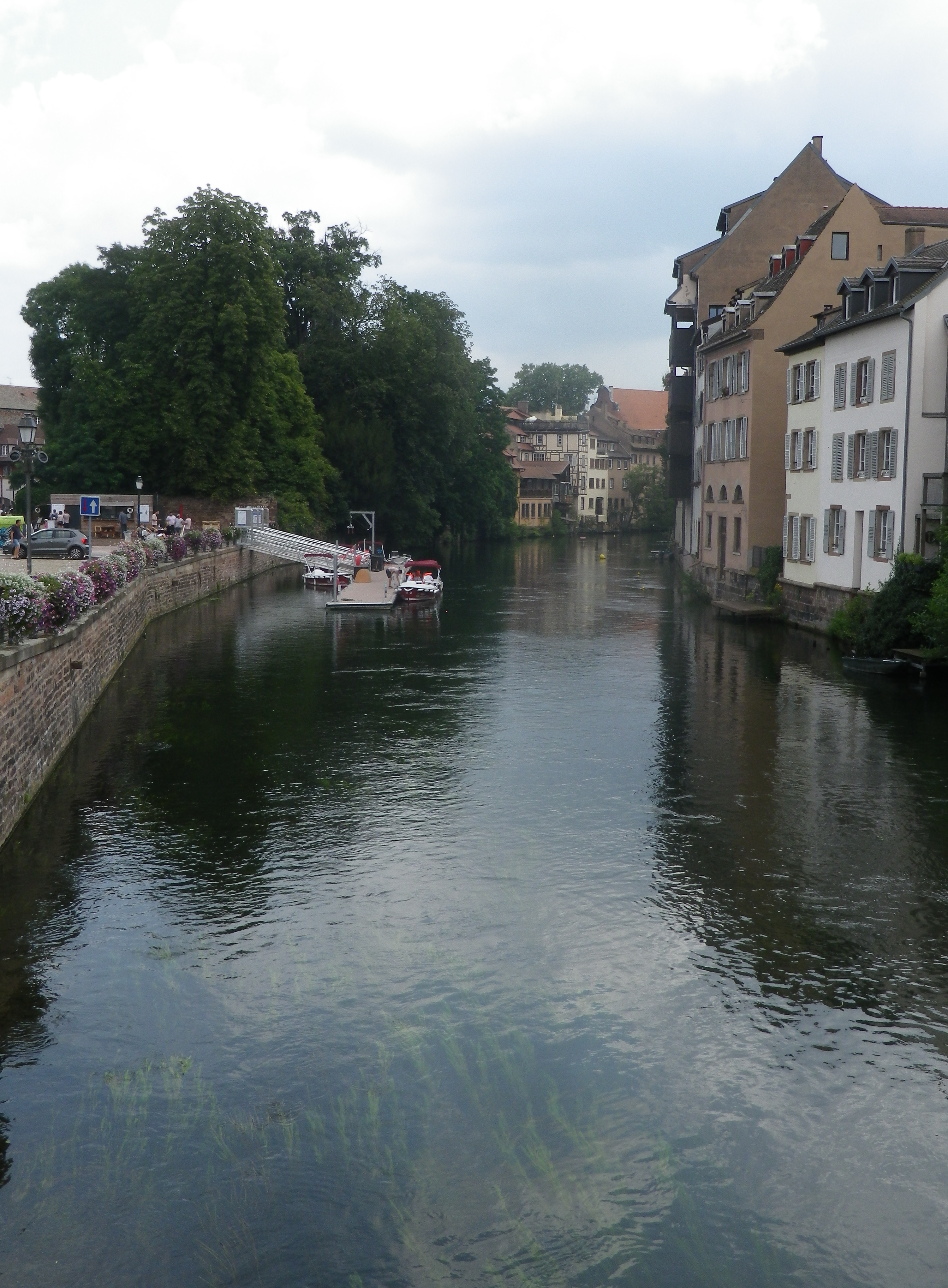
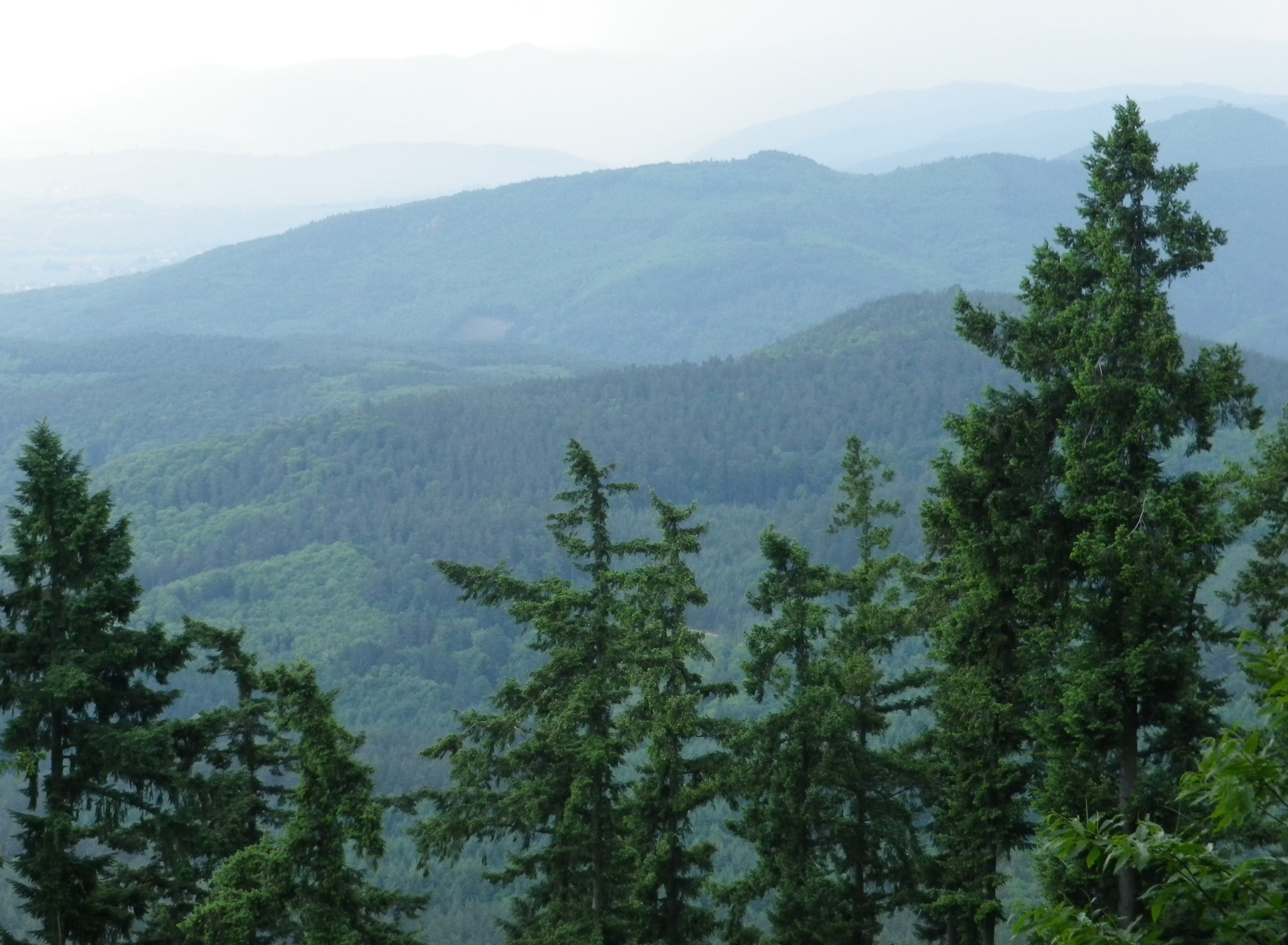
- The Place: Switzerland, the Valais Canton
The Activity: Cycling the 82-kilometer-long Chemin du Vignoble trail from Martigny to Leuk
Why this One: The Alpine scenery is spectacular, no doubt about it. The mountainsides rise dramatically all around, the blue-green Rhone River pours through the valley between them, and cyclists pedal along, enjoying the beauty of it all.
Caveats: This route is listed as difficult, and two days are suggested to complete it. (Sion is the suggested intermediary point.) However, if you reverse the itinerary (from Leuk to Martigny), it is much easier, as it follows the river valley downhill, vice uphill. Mind, there will still be some inclines, but except for the long uphill segment between St Leonard and Grimisuat, they were not show stoppers.
Winning Wine Discovery: Arvine, also known as Petit Arvine, is a white grape varietal indigenous to the Valais region, and very rarely found elsewhere. It is nicely crisp, with unique mineral and citrus flavors. All combined to form a memorable palate of tangy, salty, and slightly sweet (due to ripe, white stone fruit flavors), making a uniquely delicious wine.
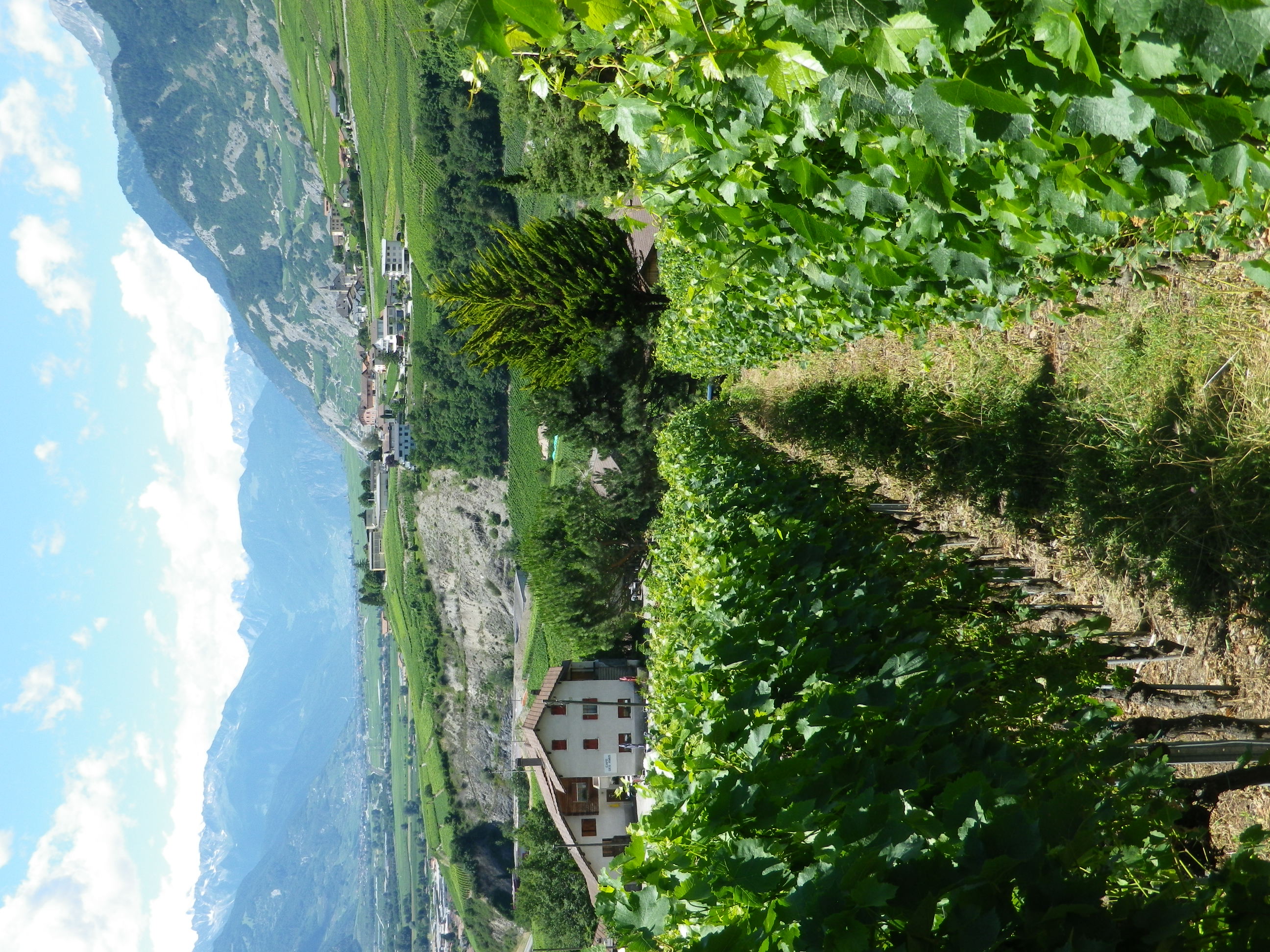
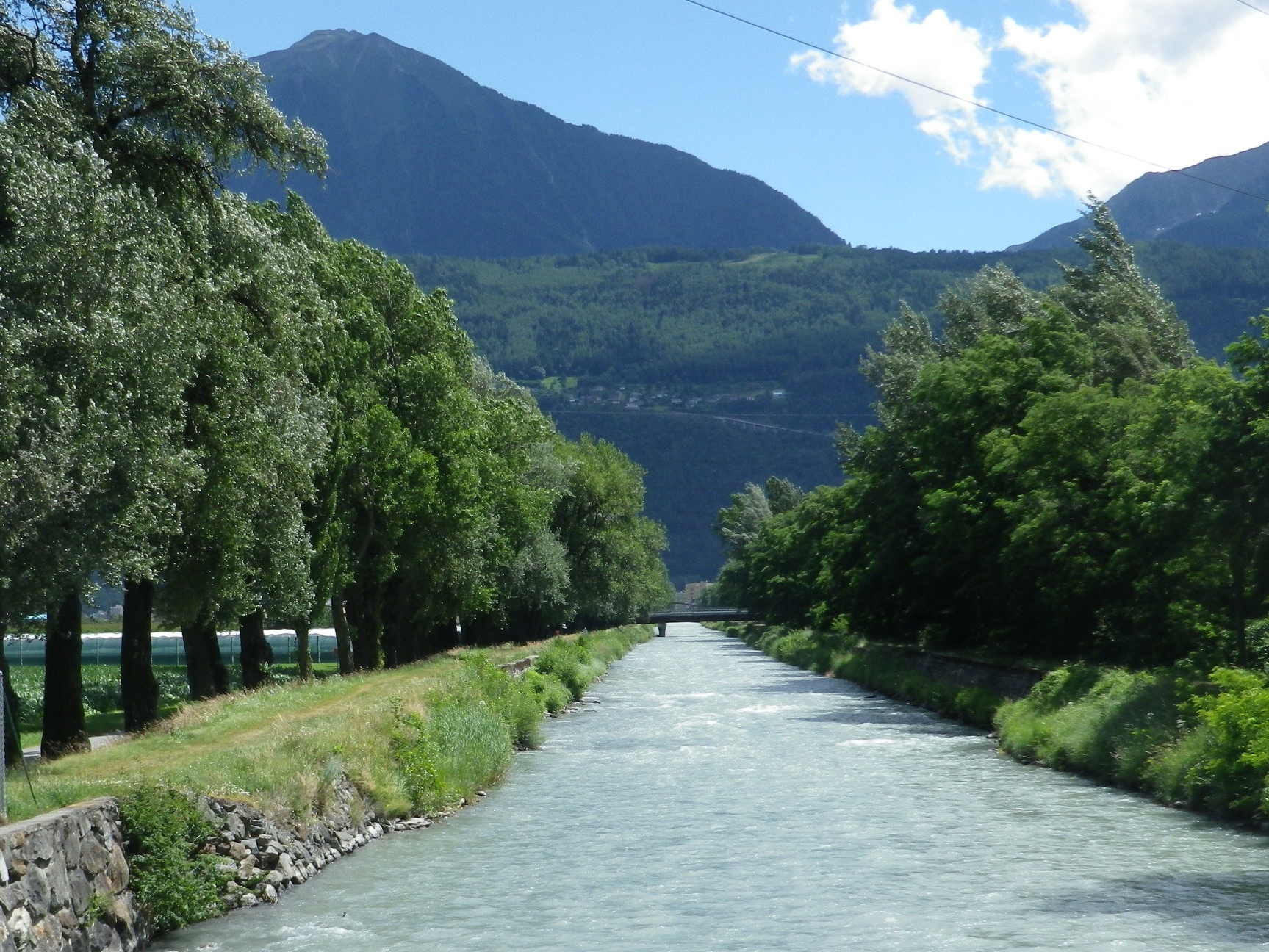
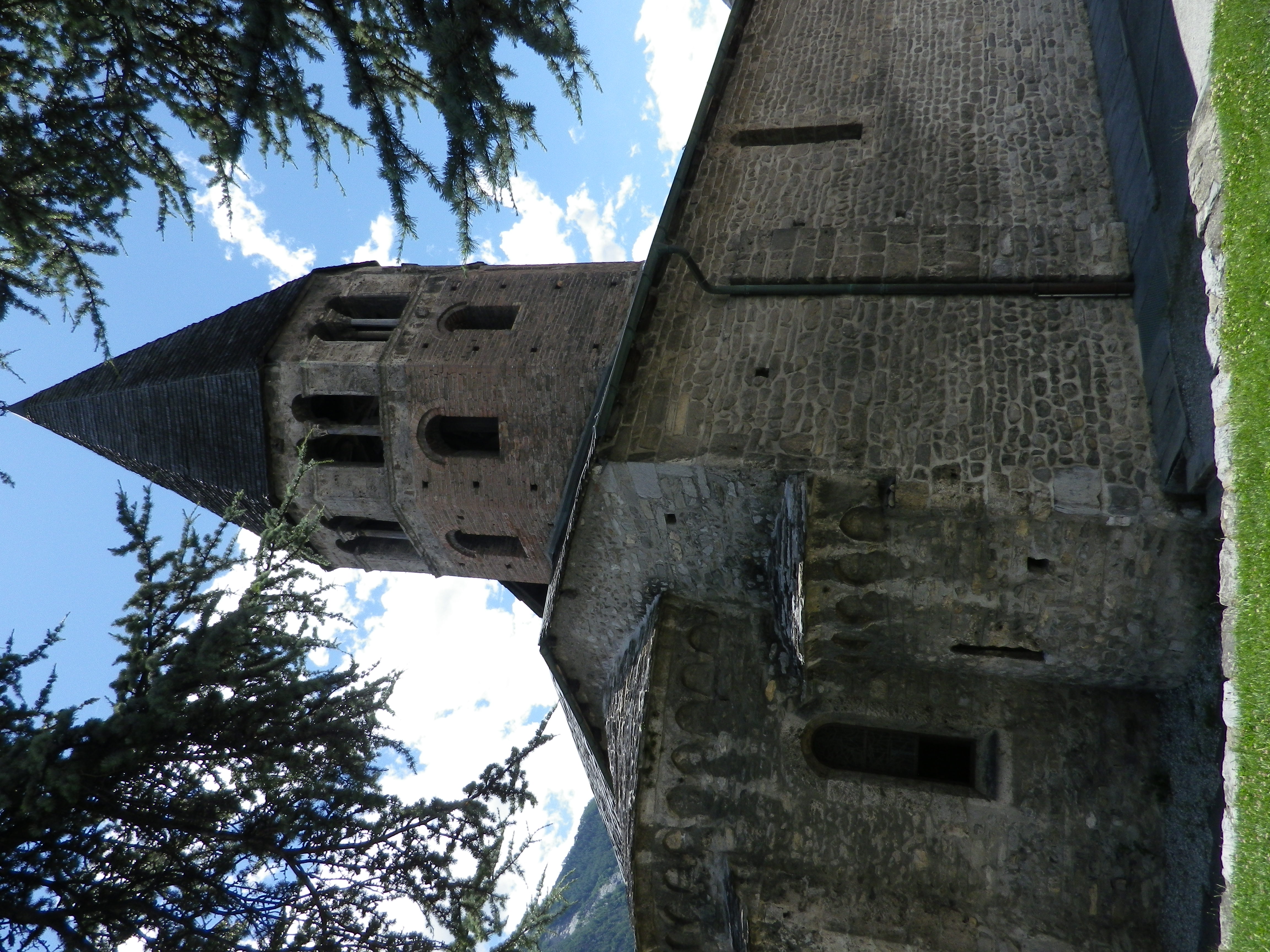
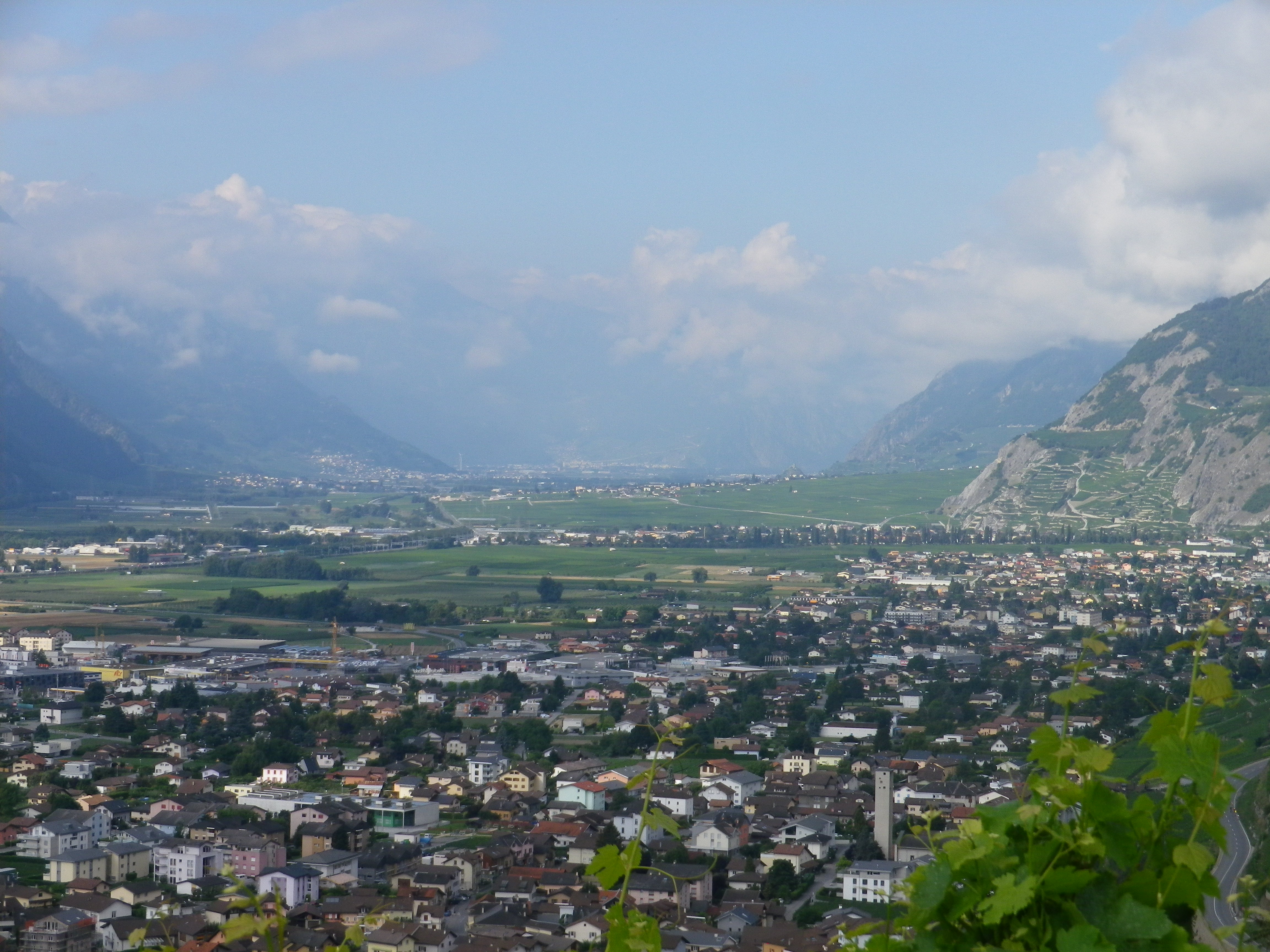
- The Place: Italy, Bozen/Bolzano
The Activity: Cycling the Weinradroute Nord/Itinerario Nord/Vino e Bici circuit
Why this One: Set in the beautiful Dolomites in the well-regarded Suedtirol/Alto Adige wine region of northern Italy, this district is much less frequented by tourists than many other regions of Italy. But that is not to say it is not visited. It is a popular spot for vacationing Germans and Austrians who take full advantage of the area’s great hiking and biking trails, and the good and plentiful lodging opportunities. In fact, this itinerary is just one of three interconnected (via the Etsch/Adige bike trail) wine-themed cycling circuits. Thus, while the German names might confuse those not familiar with the rich cultural history of this area, relax – it is still Italy after all – enjoy the great weather of this sunny side of the Alps and take the time to cycle all three!
Caveats: There are some segments of street cycling along narrow roads, with little or no shoulders. Bring a good map or navigation device, as the trail markings were not always where they needed to be.
Winning Wine Discovery: Lagrein is a red grape varietal grown both in the Suedtirol and the neighboring Trentino region. It vinifies as a red wine that produces powerful red berry aromas and flavors.
Finally, the Sentiero Valtellina gets an honorable mention here. The trail itself is marvelously laid out along the river valley floor, with views of vertiginous mountainsides, covered with vineyards on the lower stretches, and followed by forests and snow-capped peaks. But most impressive is the fact that five communities work together to keep this trail in great shape, and unusually for Italy, much of this trail’s itinerary is on dedicated bike path!
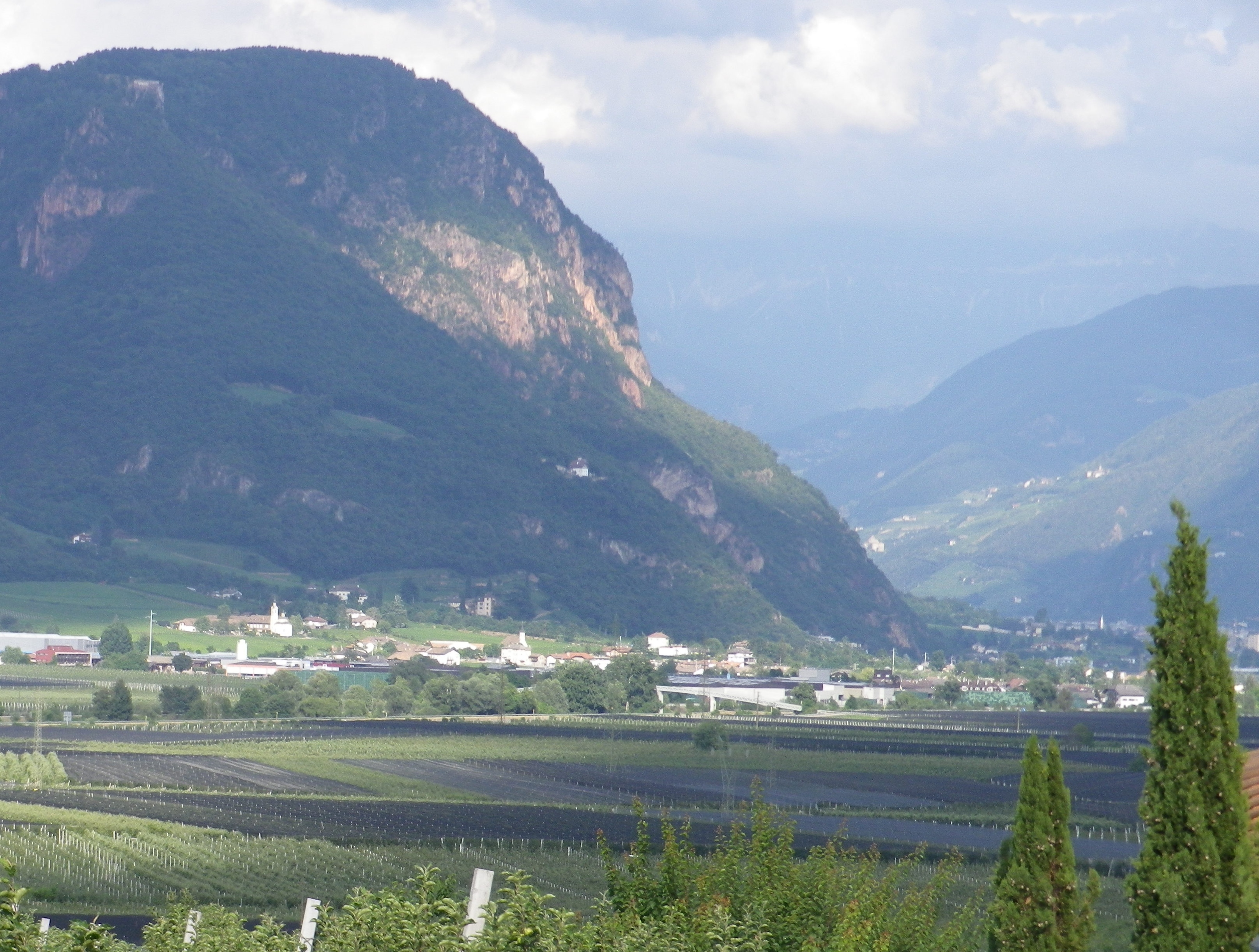
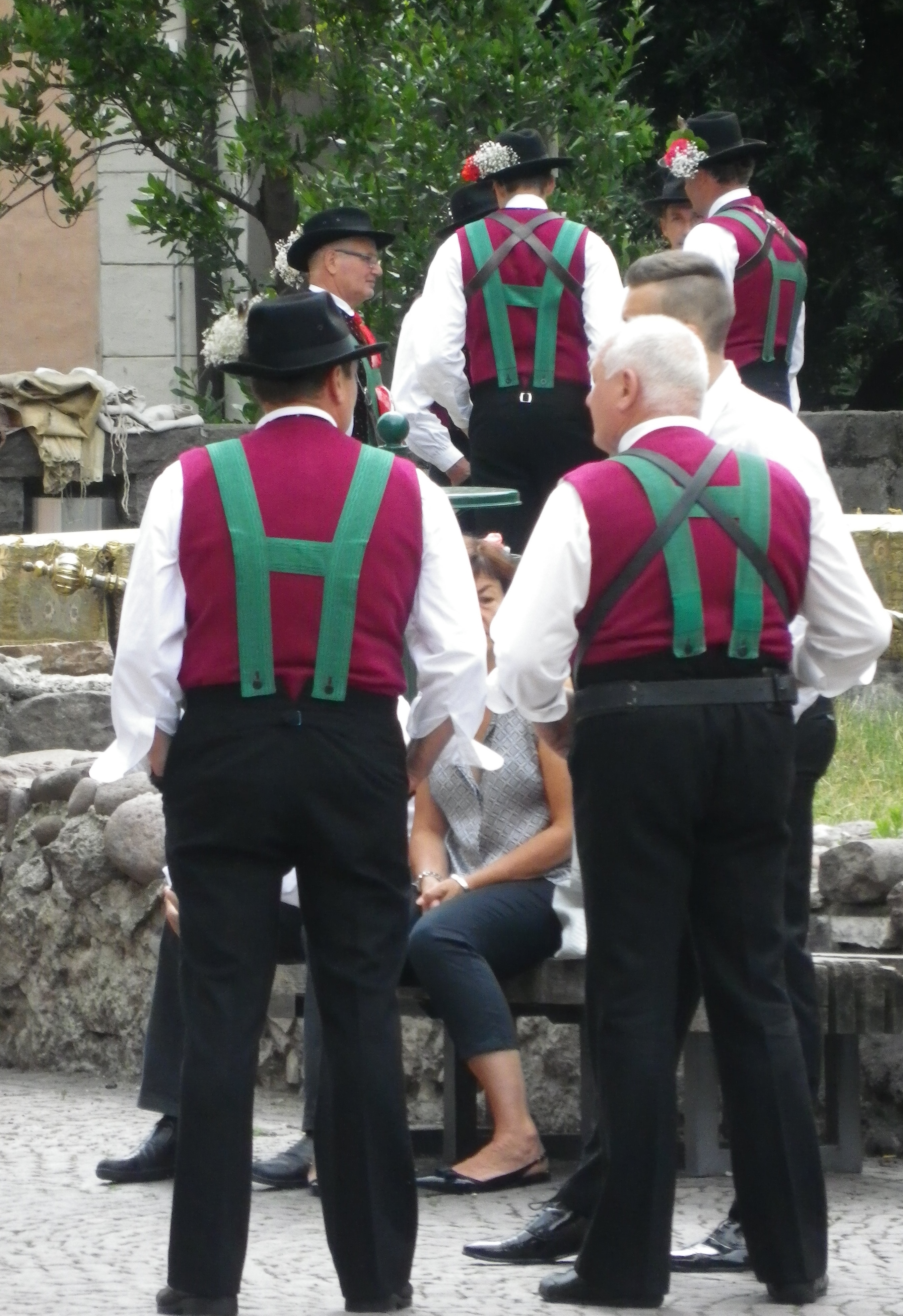
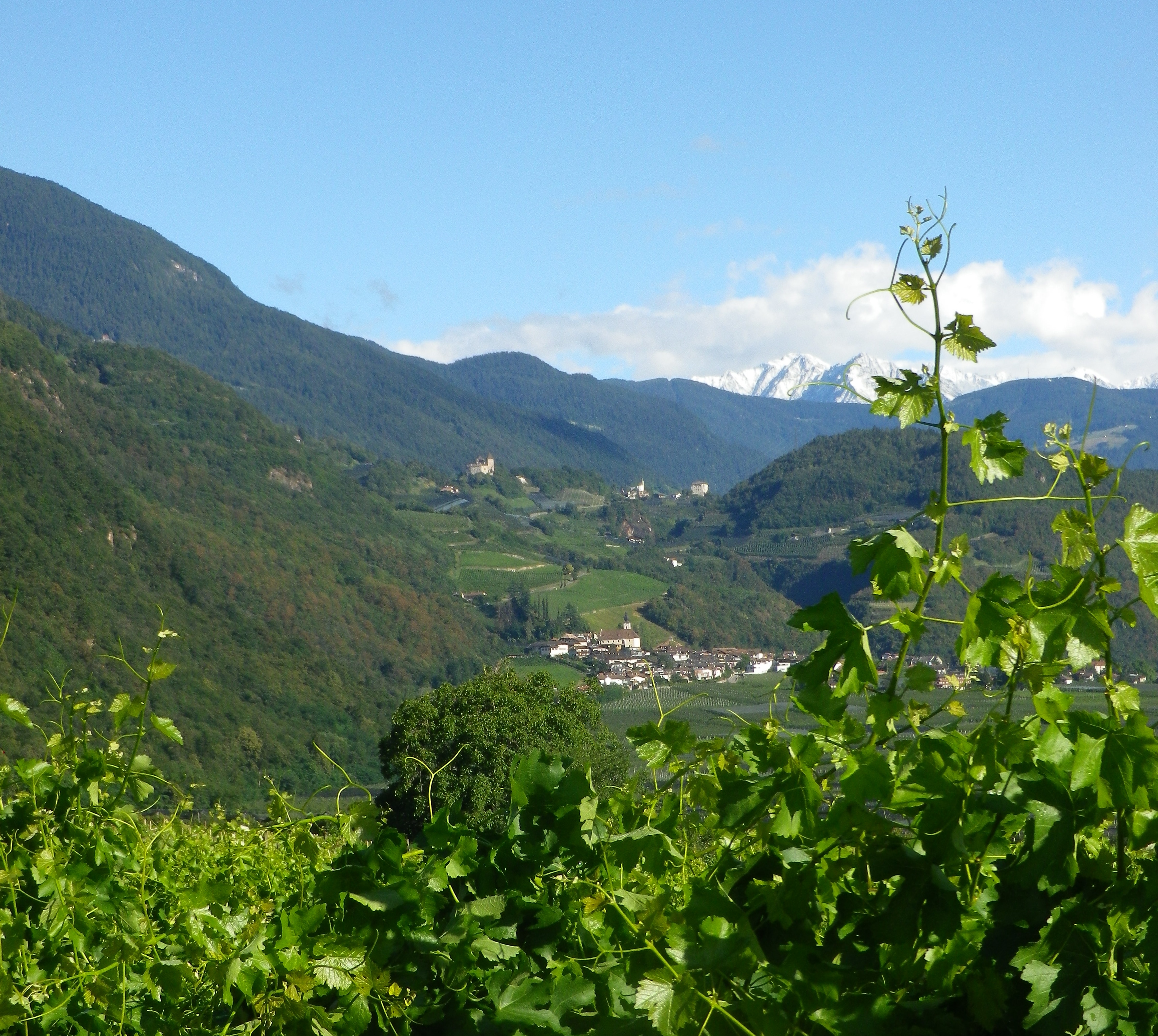
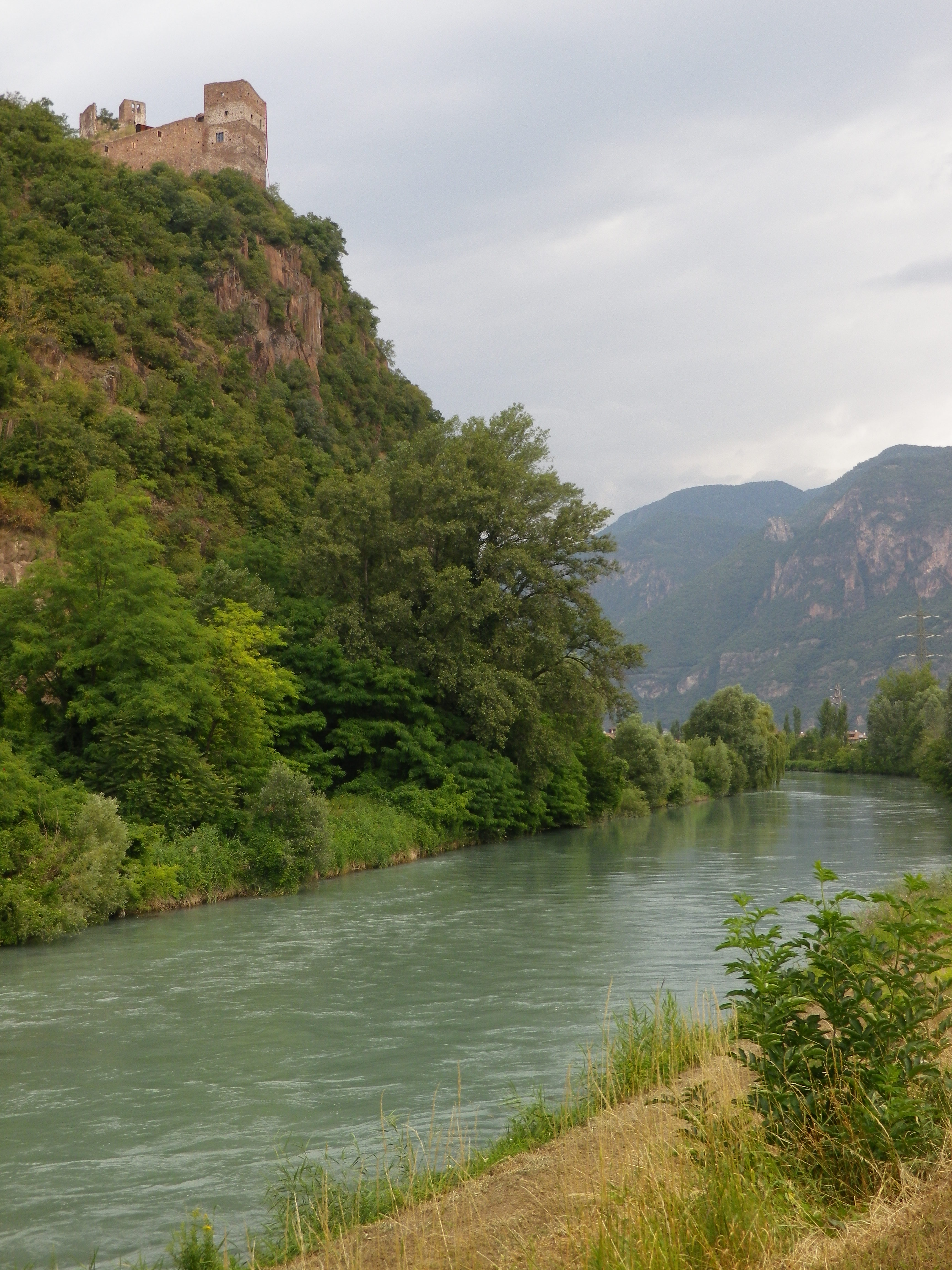
Gallery January 2021
Top Three Winecountry Hikes
With COVID 19-related travel restrictions and lockdowns, everybody’s ability to travel has made hiking and biking in Europe difficult, and impossible for me in 2020. So this month, I have decided to focus on some of my favorite hiking adventures. I will explain why I favor these adventures over some of the others, and let the photographs speak for themselves. You will note that sometimes the photos are taken in different seasons, and that is because I so enjoyed these wine regions (and their wines), I revisited them more than once. And I fervently hope that hikers, including myself, can travel to these areas in 2021!
1. The Place: Italy: Valtellina
The Activity: Hiking (or mountain-biking!) the 70-kilometer-long Via dei Terrazzamenti
Why this one: This moderately challenging hike offers absolutely stunning Alpine scenery, with several villages or hamlets to explore along the way, and diverse agricultural landscapes just to provide variety. The trail was moderately challenging, as there were several steep and relatively long inclines, but they were punctuated by relatively flat stretches, and even some descents. The scenery can speak for itself, and the villages and hamlets were quiet, charming, unspoiled locations in which to take a break, and enjoy the atmosphere. Sondrio is about in the middle, and a good place to base from, and makes a good place to break the hike until the next day. While I loved the fantastic Sentiero Valtellina bicycle trail (see details here) which parallels this trail, albeit along the north-facing side of the river valley, the Via dei Terrazzamenti won out because it was higher up, and on the south-facing mountains, thus passing through more vineyards.
Caveats: The quiet location means you might be challenged to find accommodation to your liking. It’s not that they didn’t have several nice hotels in Sondrio, Tirano and Morbegno. It is just that if you are looking for a resort, or even a five-star hotel, there won’t be any (as of January 2021).
Winning Wine Discovery: In Valtellina, the Nebbiolo grape is known as Chiavennasca. While it is vinified in several different ways, my favorite wine is the Sforzato di Valtellina. Like the famous Amarone di Valpolicella, these grapes are air-dried for a period of time after harvest but before being pressed. This results in a rich, highly flavorful red wine of great intensity and power.
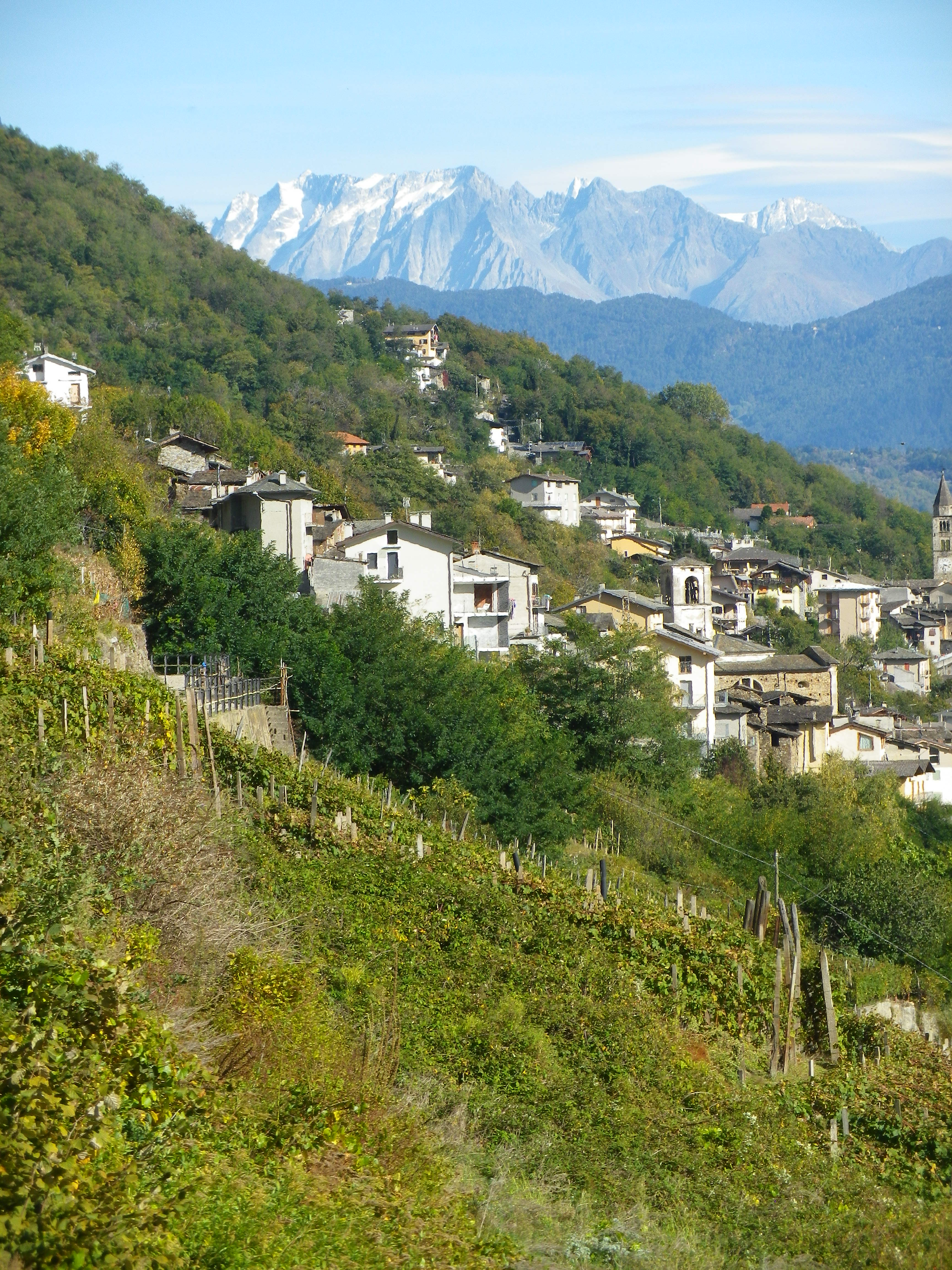
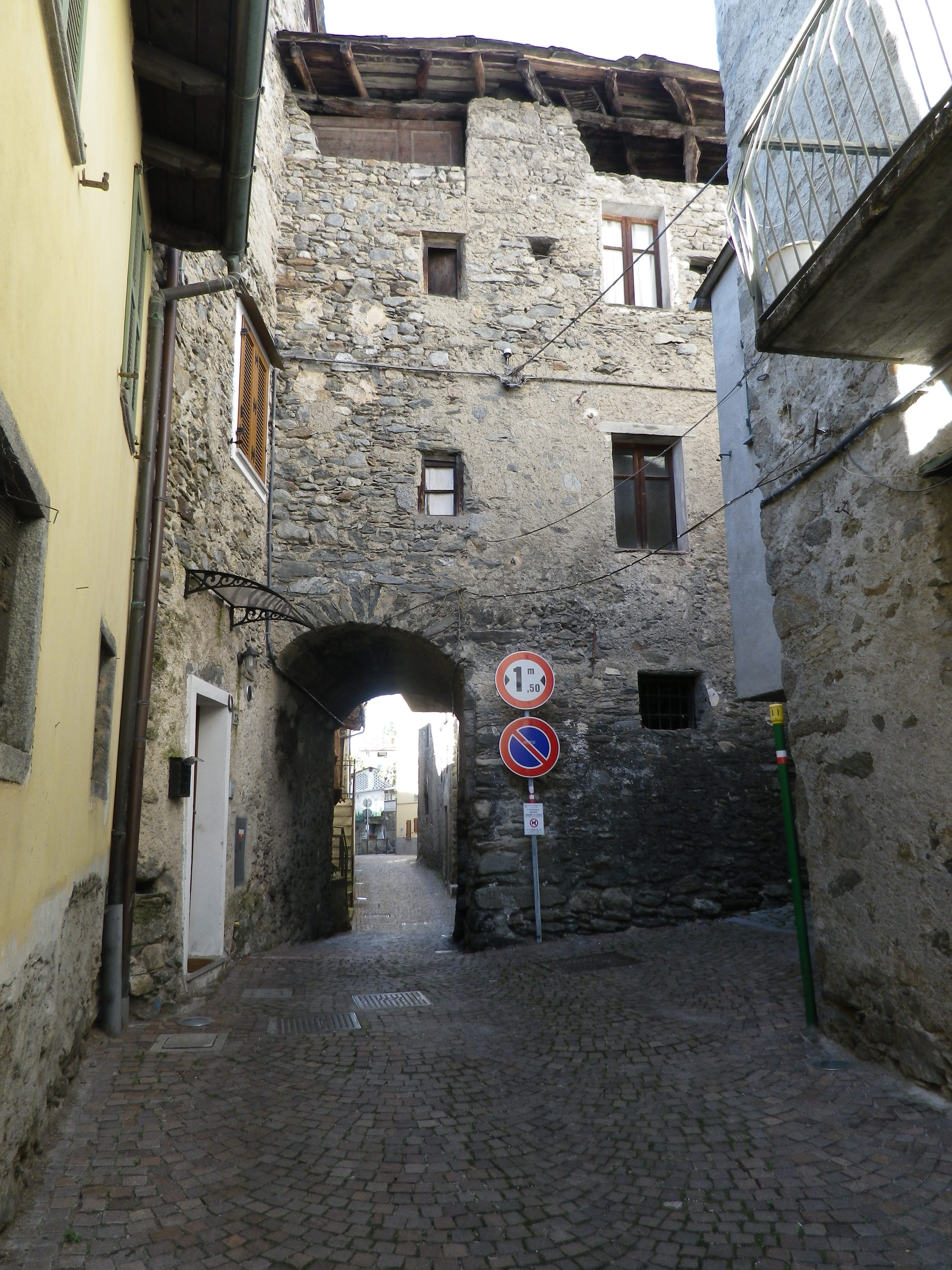
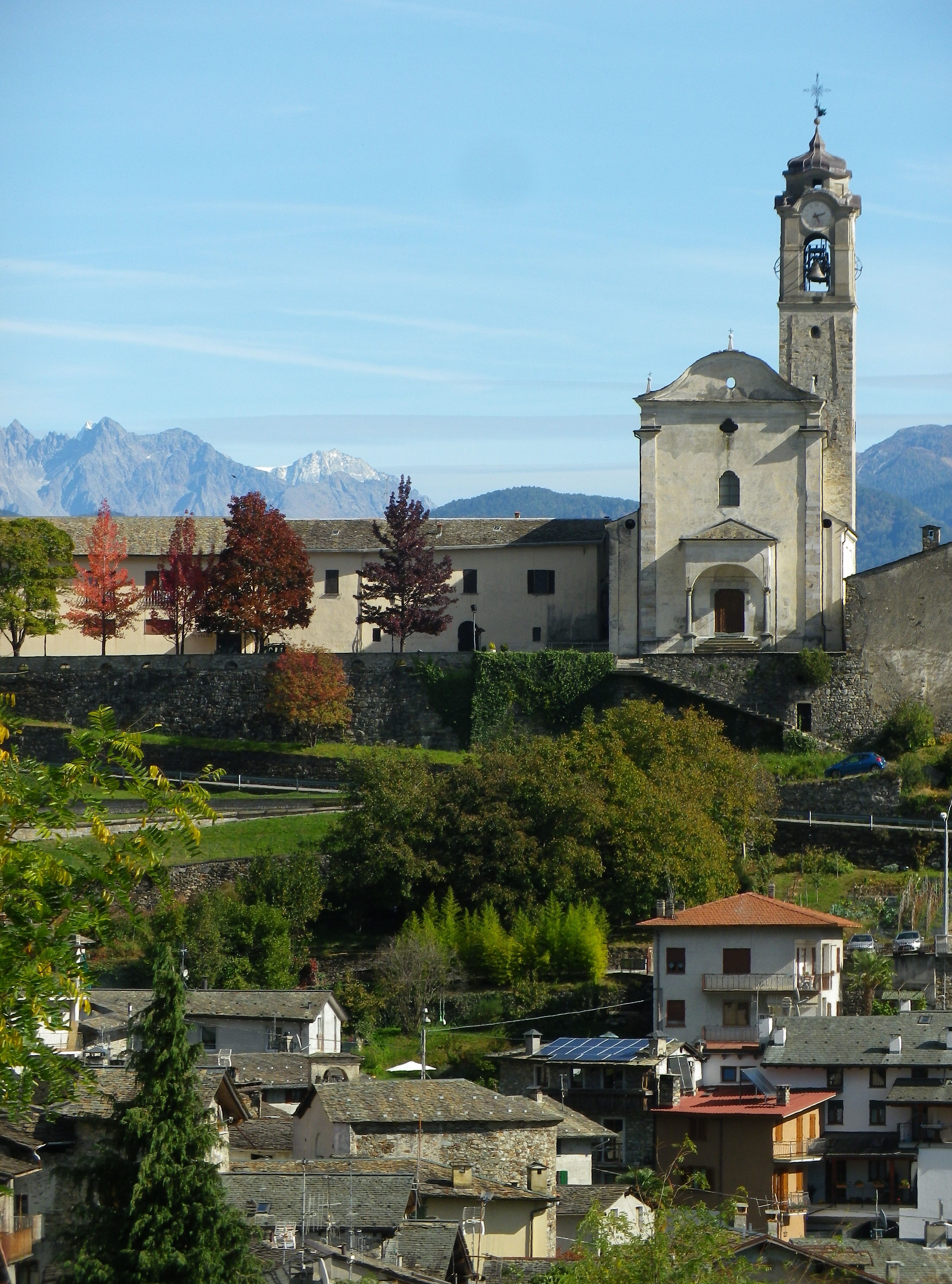
2. The Place: France, Alsace, Riquewihr
The Activity: Hiking the 17-kilometer long Sentier Viticole des Grands Crus (See details here.)
Why this one: What is not to like? The trail is relatively easy, and its ingenious design of interconnecting loops within a big loop allows hikers to decide which loop to hike and how much to hike in any one day, while still basing in a single town. Also, this is one of the most popular areas of Alsace, and rightly so. The scenery is a pleasant mix of villages, vineyards, fields and not-so-distant tree-covered mountain tops. The six villages (Hunawihr, Bennwihr, Mittelwihr, Zellenberg, Beblenheim and Riquewihr), are all picture postcard worthy, and charming, once you explore them. The food is excellent, the wines deliciously diverse, and the lodgings varied and (usually) available. Alsace represents excellent values for the money in all three of these areas.
Caveats: As the hike is along one of the most visited sectors on the French Route des Vins d’Alsace, a 150+ kilometer long car route, it can be crowded in restaurants, hotels and parking lots in July and August with local day-trippers and summer vacationers, so plan ahead!
Winning Wine Discovery: Cremant d’Alsace – a sparkling wine made in the Champagne Method. I found that Cremant d’Alsace could be just as effervescent as Champagne, and, due to higher grape ripening levels overall, a bit smoother and fruitier on the palate. (It is also a lot less expensive – another plus!)
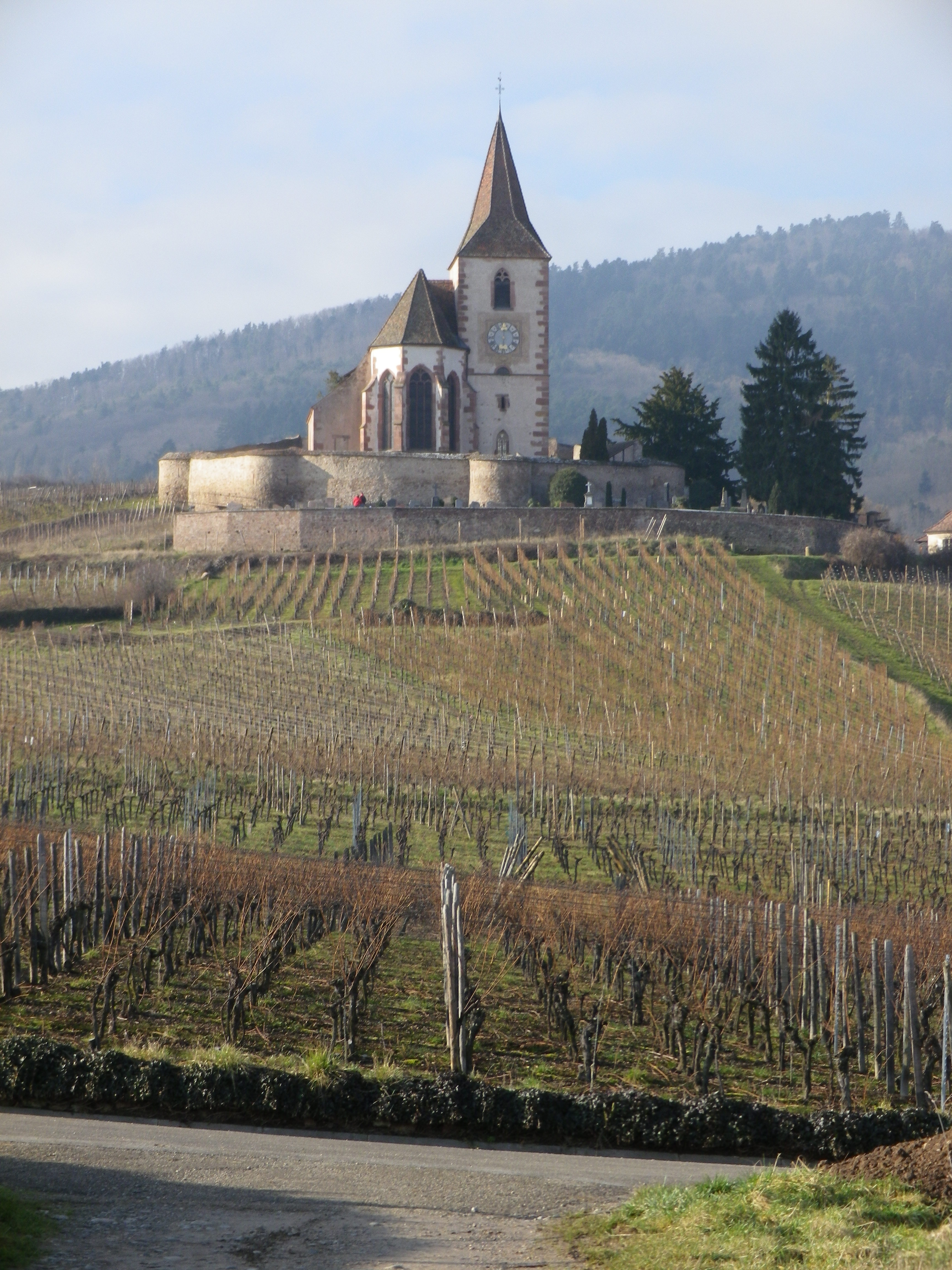
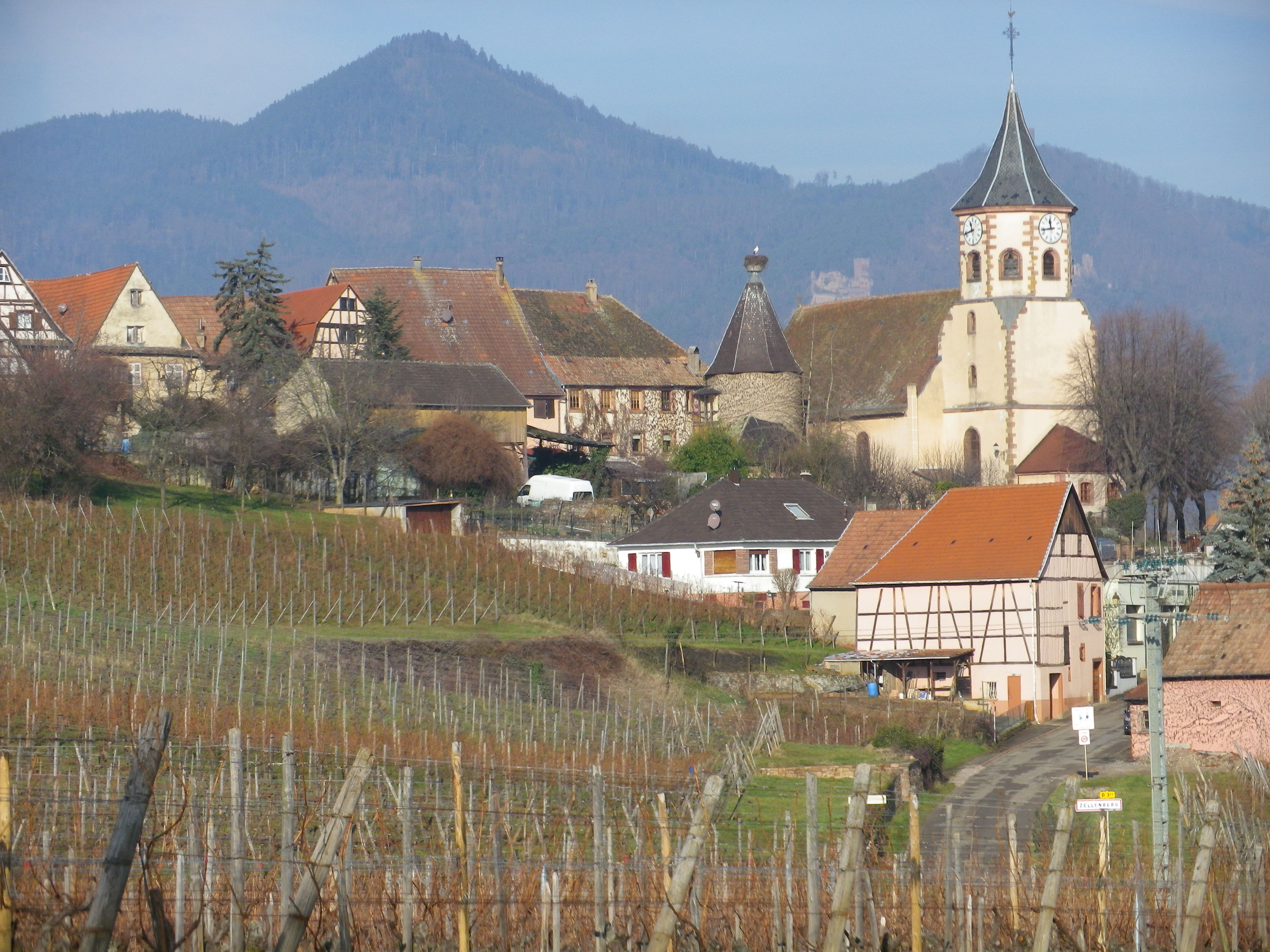
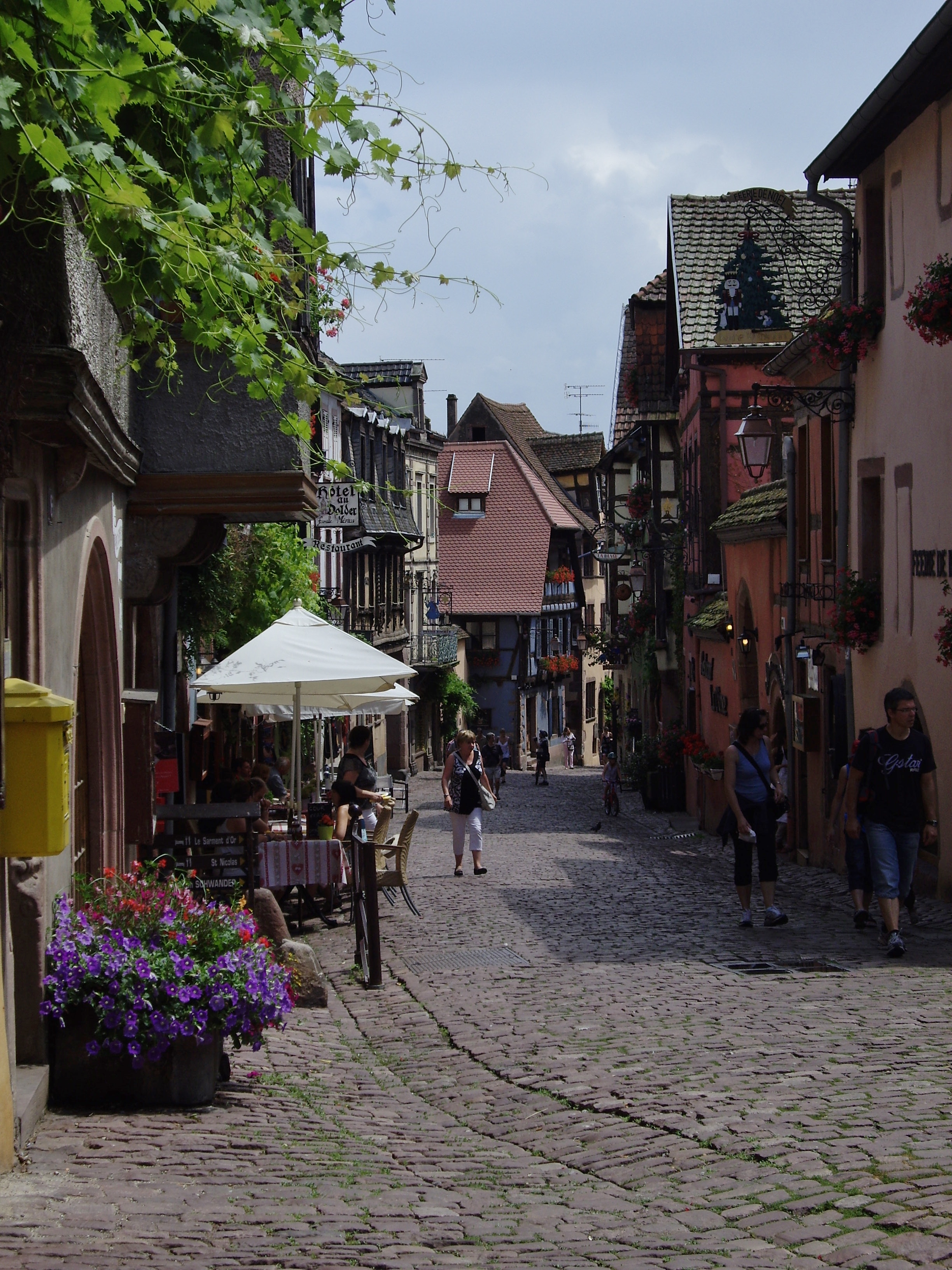
3. The Place: Germany, Middle Rhine (Mittelrhein)
The Activity: Hiking the 120-kilometer long Rheingauer Riesling Pfad (See details here.)
Why this one: The magic of the myths of the Middle Rhein come to life on this hike. Rising higher and higher along the hills lining the Rhine, the myth-making castles come into view. The perspective of a major river snaking its way through a canyon (from Kaub to Ruedesheim at least) is awe-inspiring, and every village is a fairy-tale unto itself. On northern half of the trail offers an especially diverse hiking experience as hikers pass through forests and glens, vineyards and fields. Another plus: While the hike itself is moderately challenging, the villages offer convenient public transportation, sometimes even via ferry, to your desired destination should need arise to break off – or take a break from – the hike.
Caveats: None, except to note that the while the winter temperatures remain mostly above freezing in the daytime, the weather can be rainy or overcast, especially from late fall to spring.
Winning Wine Discovery: Riesling! I had always found it thin and acidic. But here in its homeland, the area of the Moselle and Rheingau, it is rich, powerful, fruity and balanced. And that can be just the regular versions! Sweeter versions such as Spaetlese, and spectacular versions such as those coming from the Grosses Gewaechs (equivalent to Grand Cru status) can be mind-blowing for those who think they won’t like Riesling.
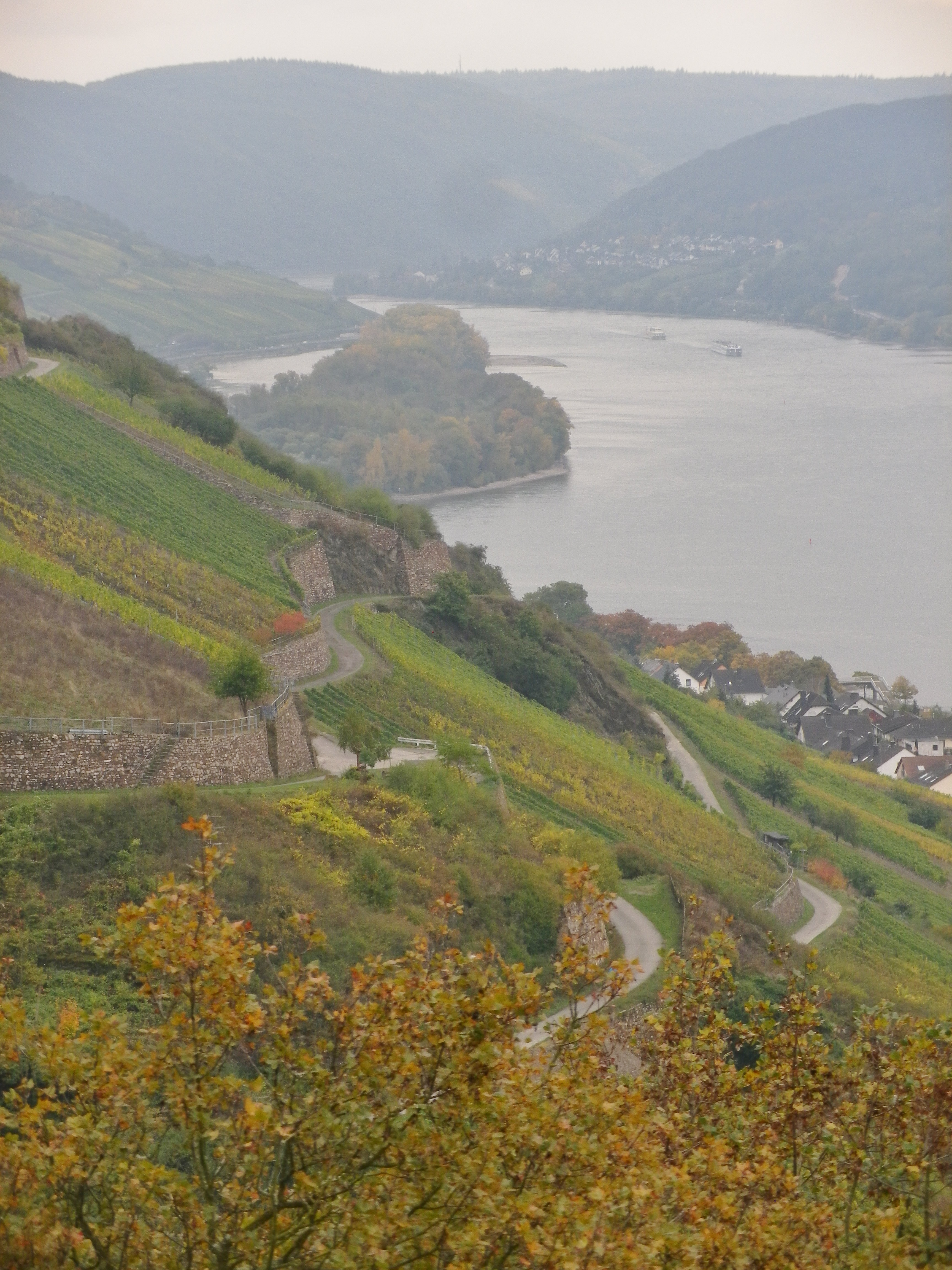
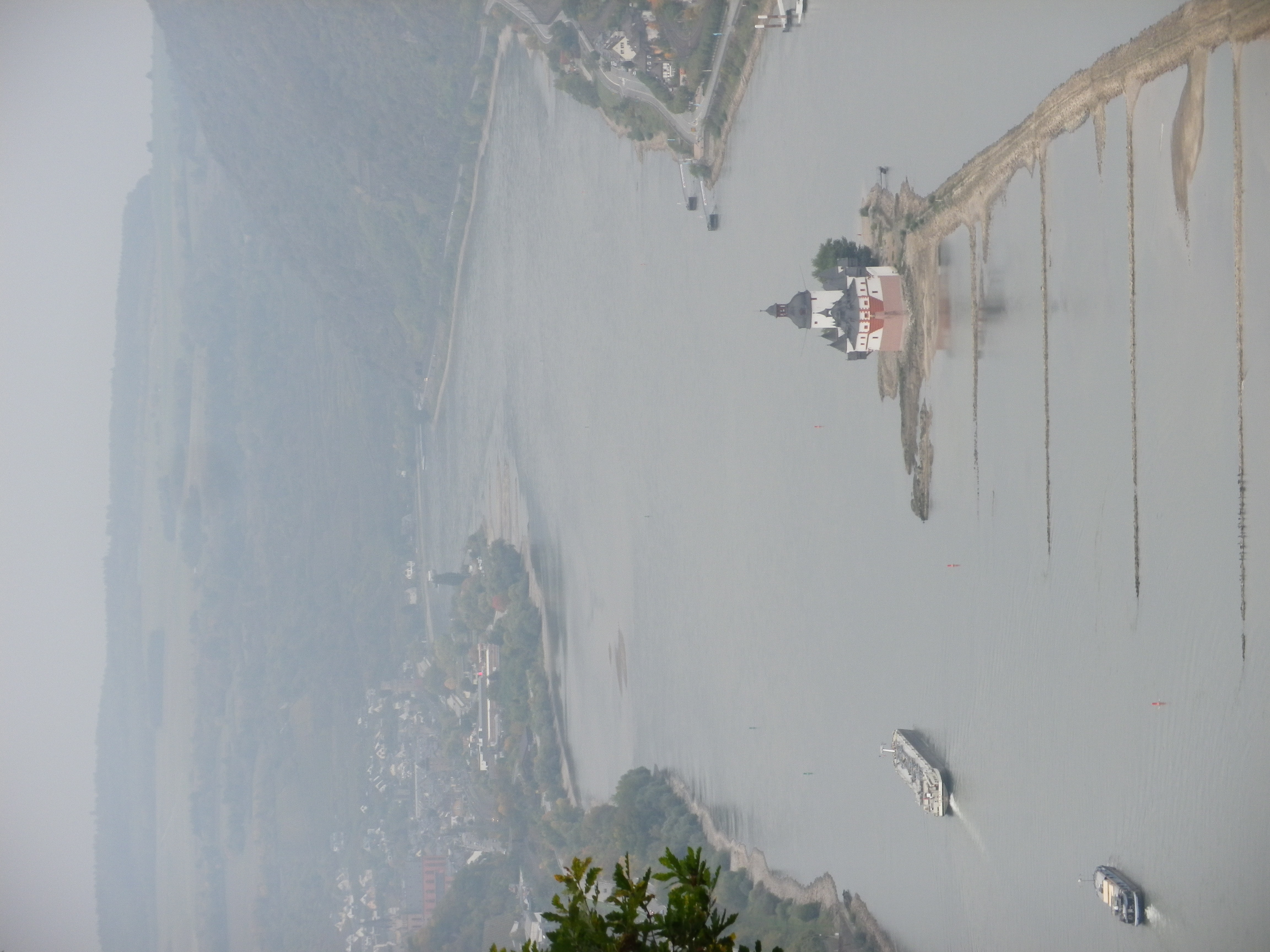
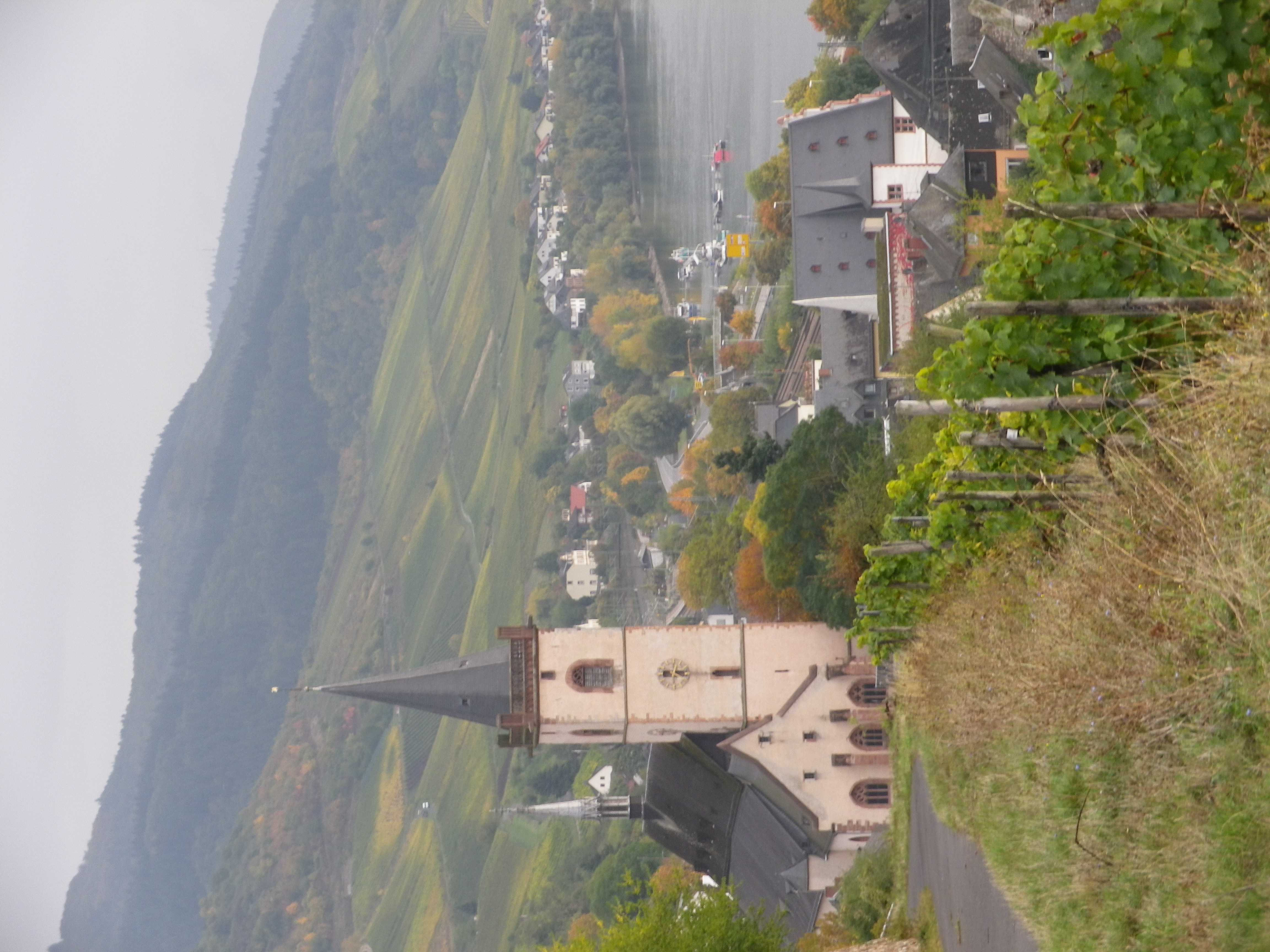
Gallery August 2020
Days of Discovery in Aosta
Recently, I visited a quiet corner of Italy. That is almost a contradiction of terms nowadays, and rather difficult to find in the summer. Seeking a refuge from mass tourism, I came across a bike ride through vineyards in Aosta Valley. Since I had never been there, I decided to make the trip. What a trove of new discoveries of all sorts!
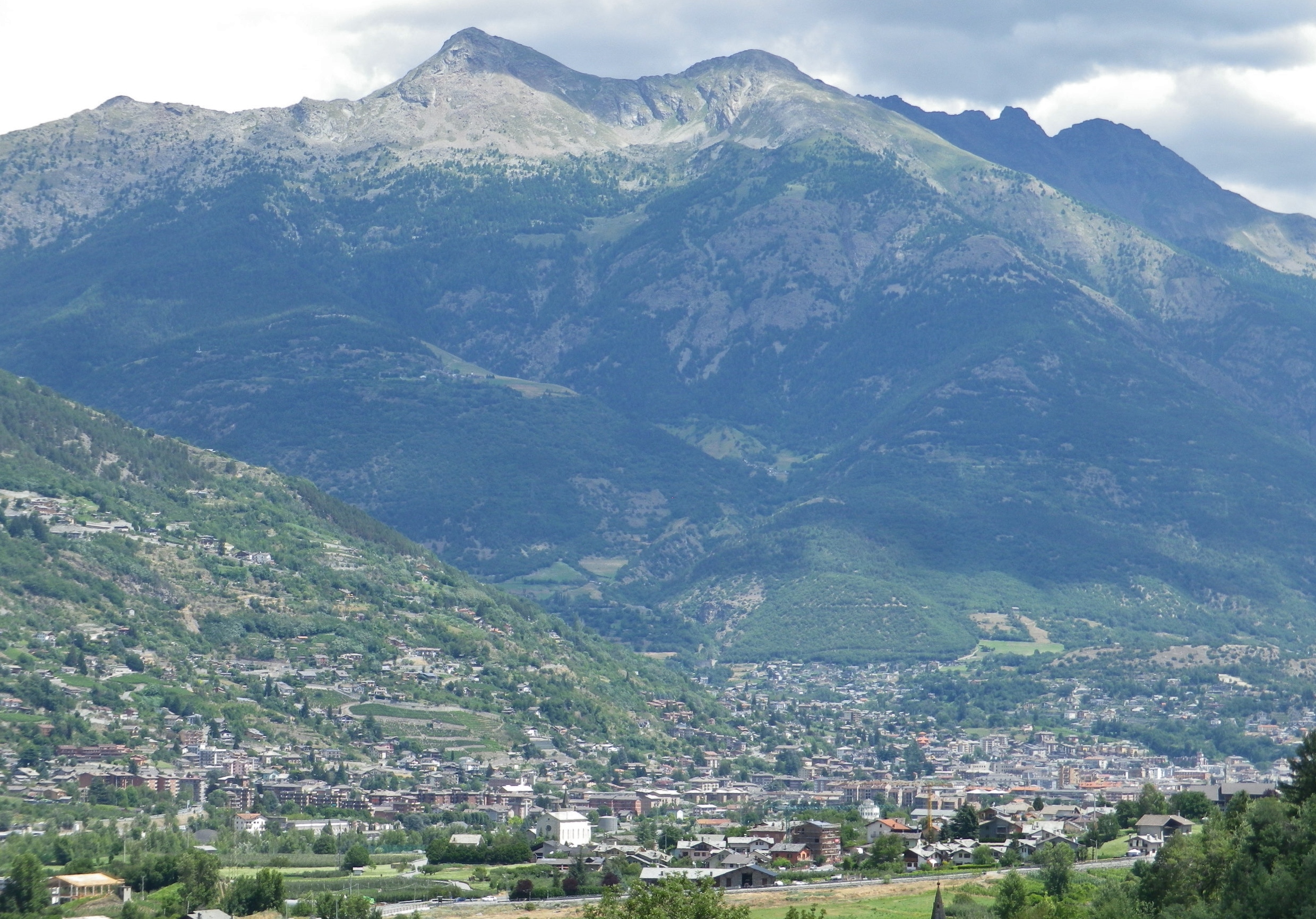
In the first place, the culture is an intriguing mix of French and Italian. Secondly, nature puts on an incredible display of the compelling and pristine: from dramatic Alpine peaks, to well-preserved meadows, to clear, roaring streams. Then, there was the food, and of course the wines.
Personally, I had never seen, or seen offered, a bottle of Aostan wine. But this bike trail was designed to rectify that. There was a clear nexus between the trail design and promotion of the local wine. The trail was designed and promoted by the local wine cooperative, the Cave des Onze Communes, in the heart of Aymavilles, a small Aostan town clinging to a mountainside, dominated by a castle and surrounded by vines.
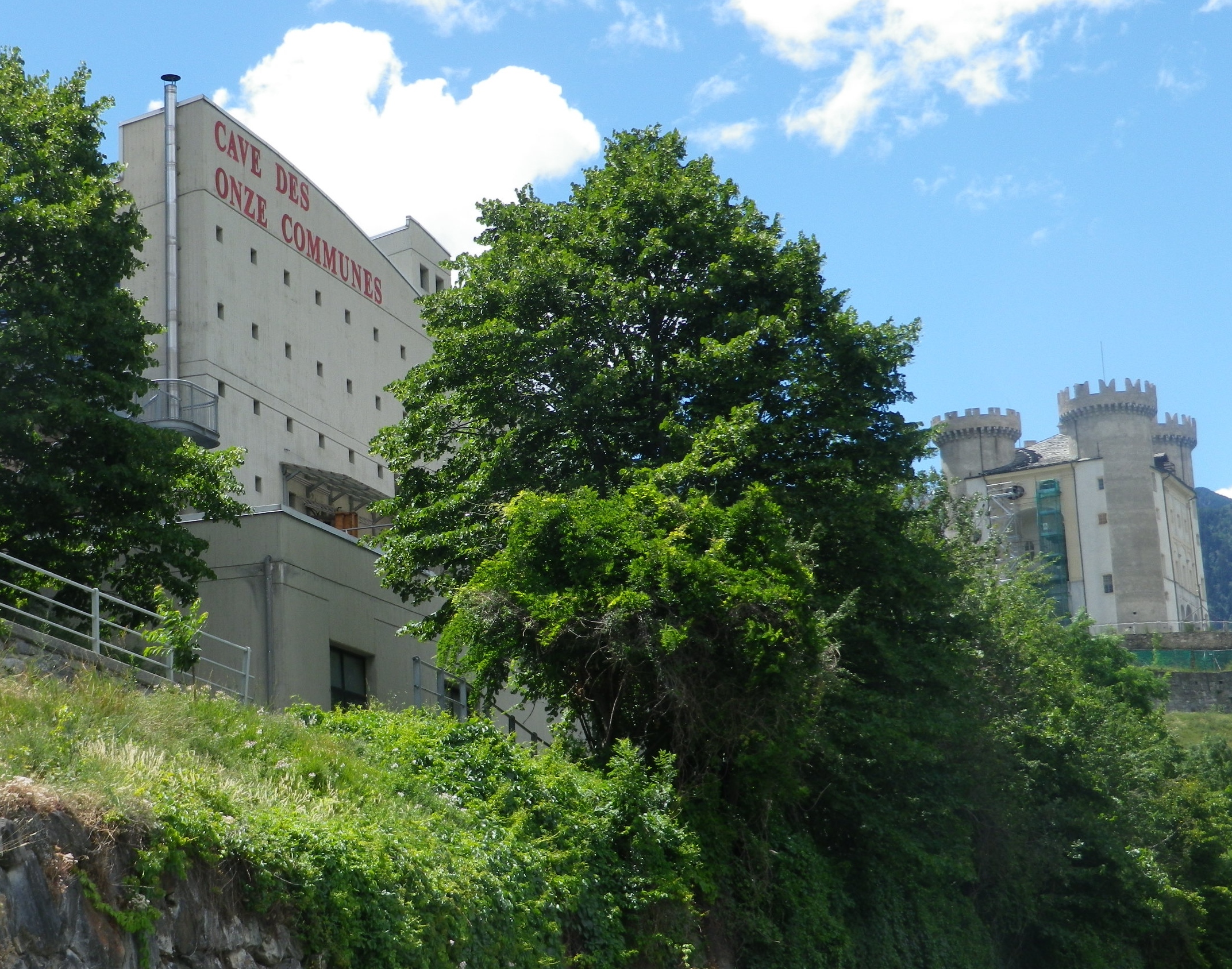
The trail, mostly on low-density/lightly-trafficked roads, either starts at the winery, or near it, or goes around it. There are actually six short segments of trail, three of which radiate from or near the winery. From there, where, and how far to go, is up to the rider.
To lengthen the ride, follow any or all of three other trails which extend from the original three. Circuits and loops may be created, and backtracking to the start is always possible, and in fact mandatory in places. However, at most there are only six miles or so of itinerary to follow, making this ideal for a quick ride.
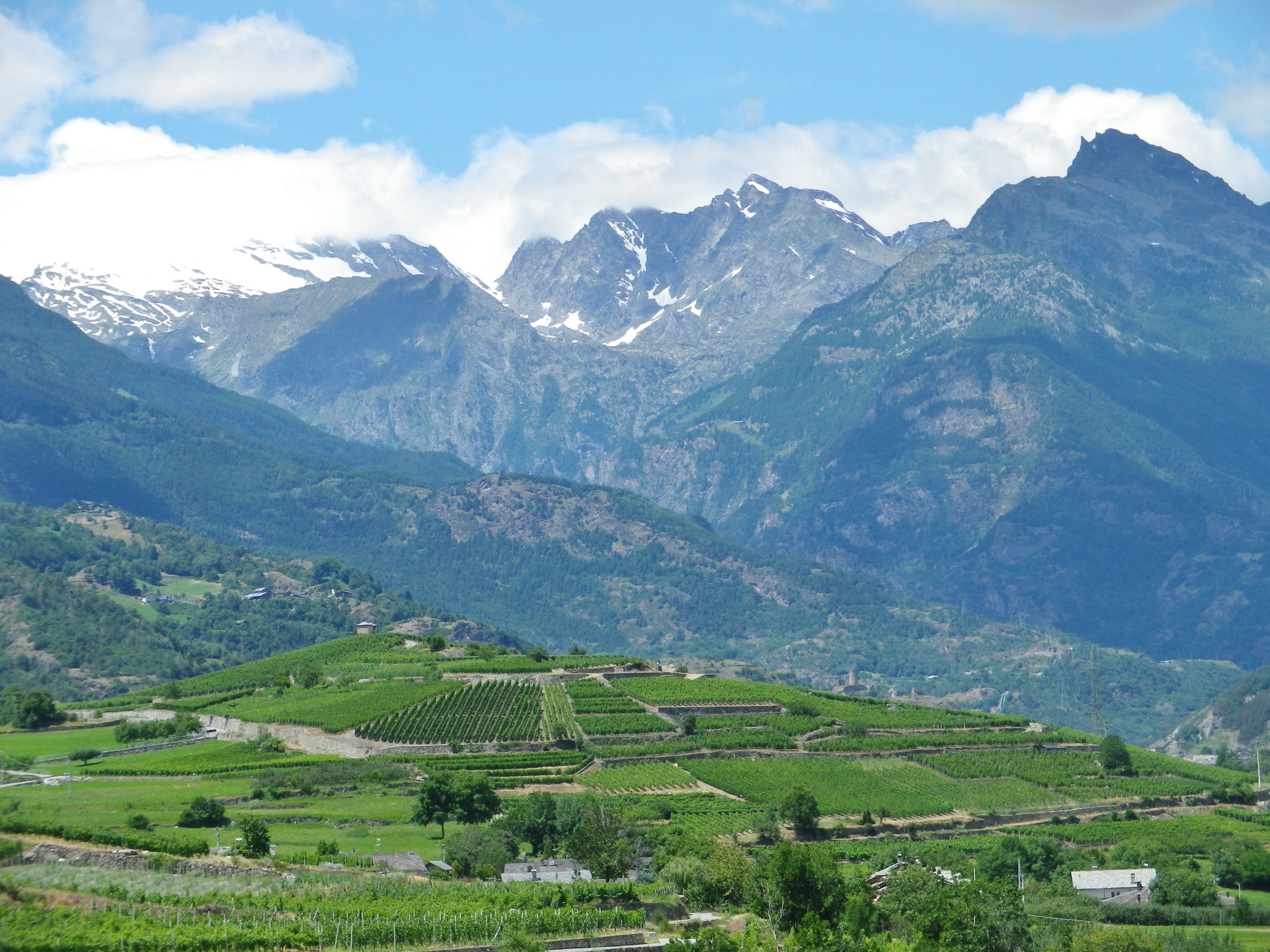
A lovely feature of this trail is the view. Mont Blanc, still topped with snow in July, is visible along part of the way, as is Aosta, the main city, in the opposite direction, further down the valley. The trail passes through vineyards, but also affords views of the vineyards on the other side of the valley. A seeming mirror image of the vineyards through which I cycled, these began low, and rose in a very irregular patchwork of vines to surprising heights on the mountains opposite. Above the vineyards were (mostly) pines, and above the tree line, rocky crags pierced the sky, in a brilliant blue on white contrast. Alternatively, those peaks would occasionally snag a cloud, and remained wreathed for a while in a soft white puff.
Castles were visible now and again, barely registering against the backdrop of such massive mountains. This area was conquered and held by many, from Romans to the House of Savoy, before joining the newly formed Italy in the mid-nineteenth century. However the old churches and houses, with steep rooves and deep overhangs, recall that the worst enemy in this part was, and still can be, the weather.
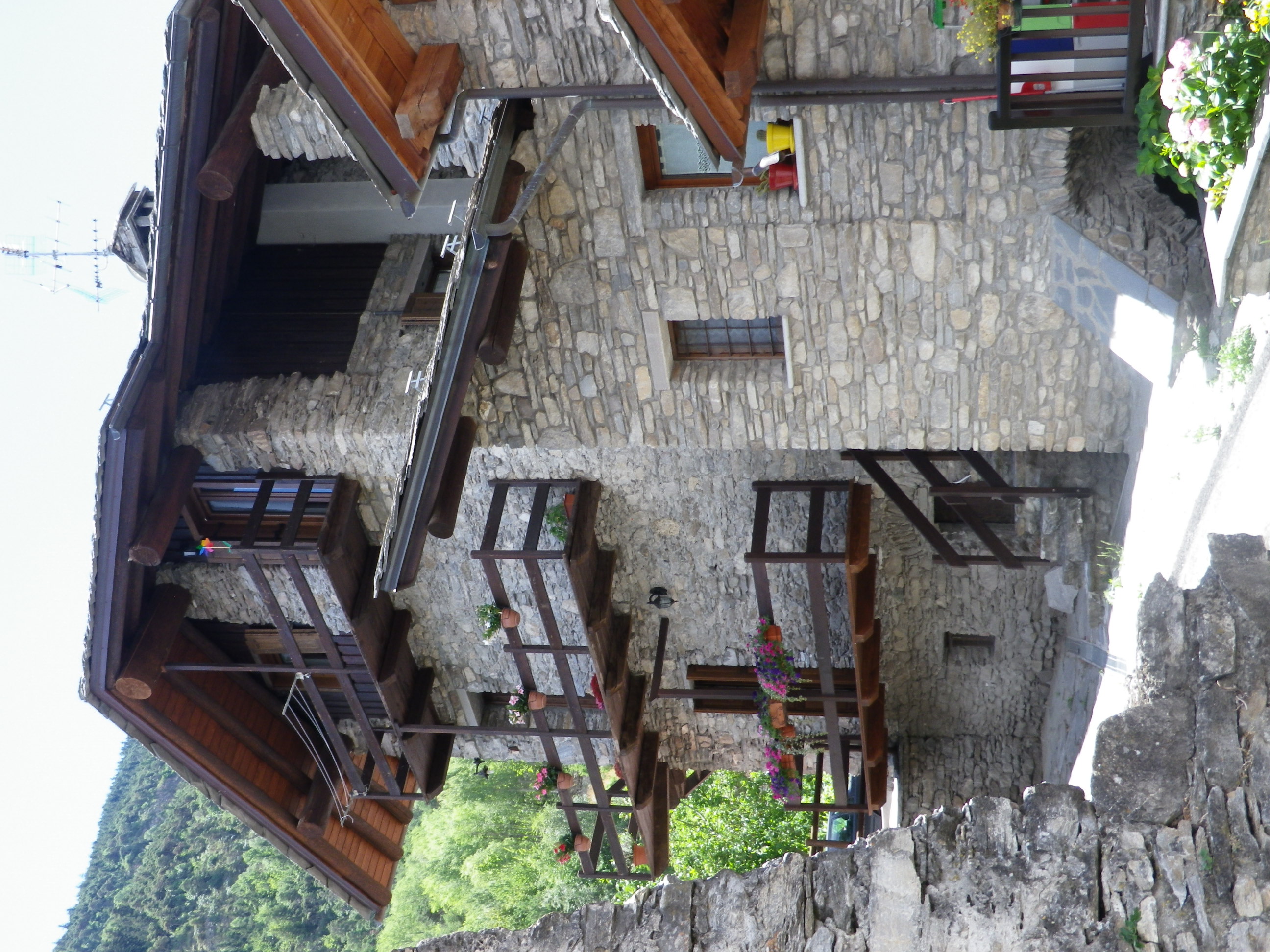
Once back at the winery though, I learned that this area boasts a fair number of local grape varieties, which do well in cold weather, and are more frost-resistant than most. What is more, the varietal wines from the cooperative are delicious, smooth, and quite reasonably priced. Unique grapes and different delicious wines: the best discovery of all!
